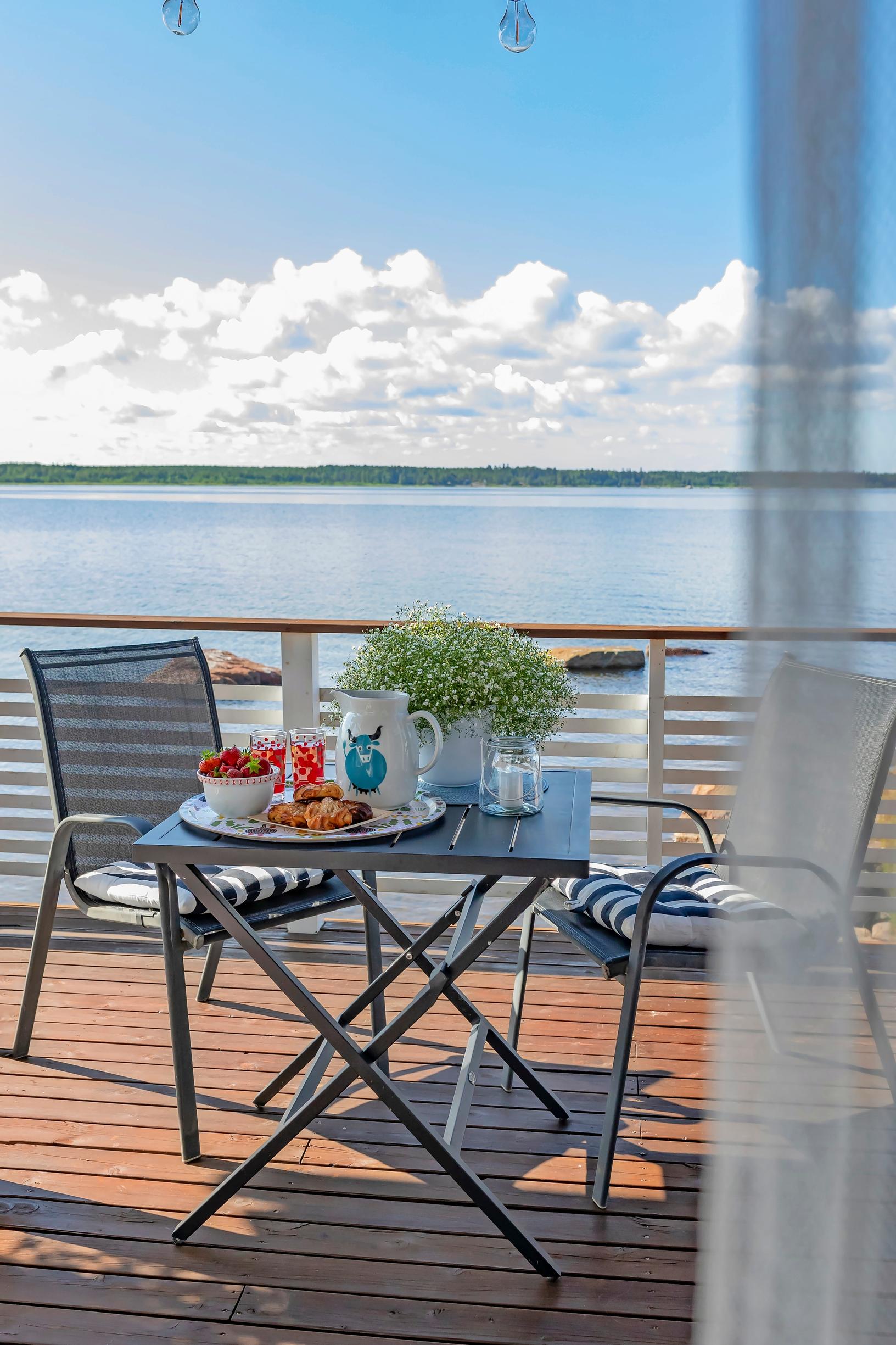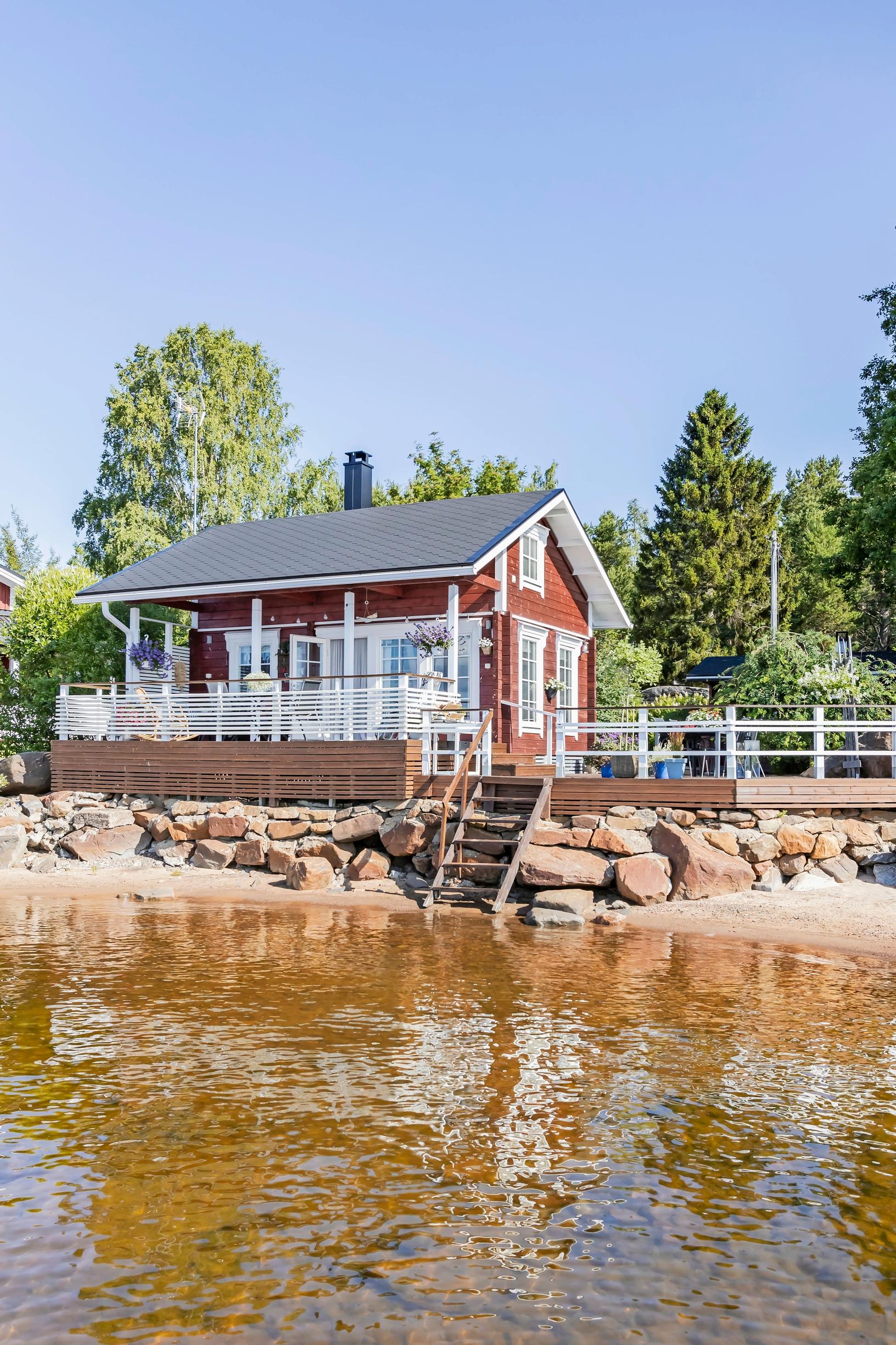
Small cottage, big terrace: discover the Karhulas’ coastal hideaway
Years ago, Jarmo Karhula’s parents built a fishing cabin by the sea. Now, Seija and Jarmo enjoy laid-back days on the same shore in their new cottage, where remote work is off-limits. Check out the Karhulas’ best yard and cottage ideas at the end of the story!
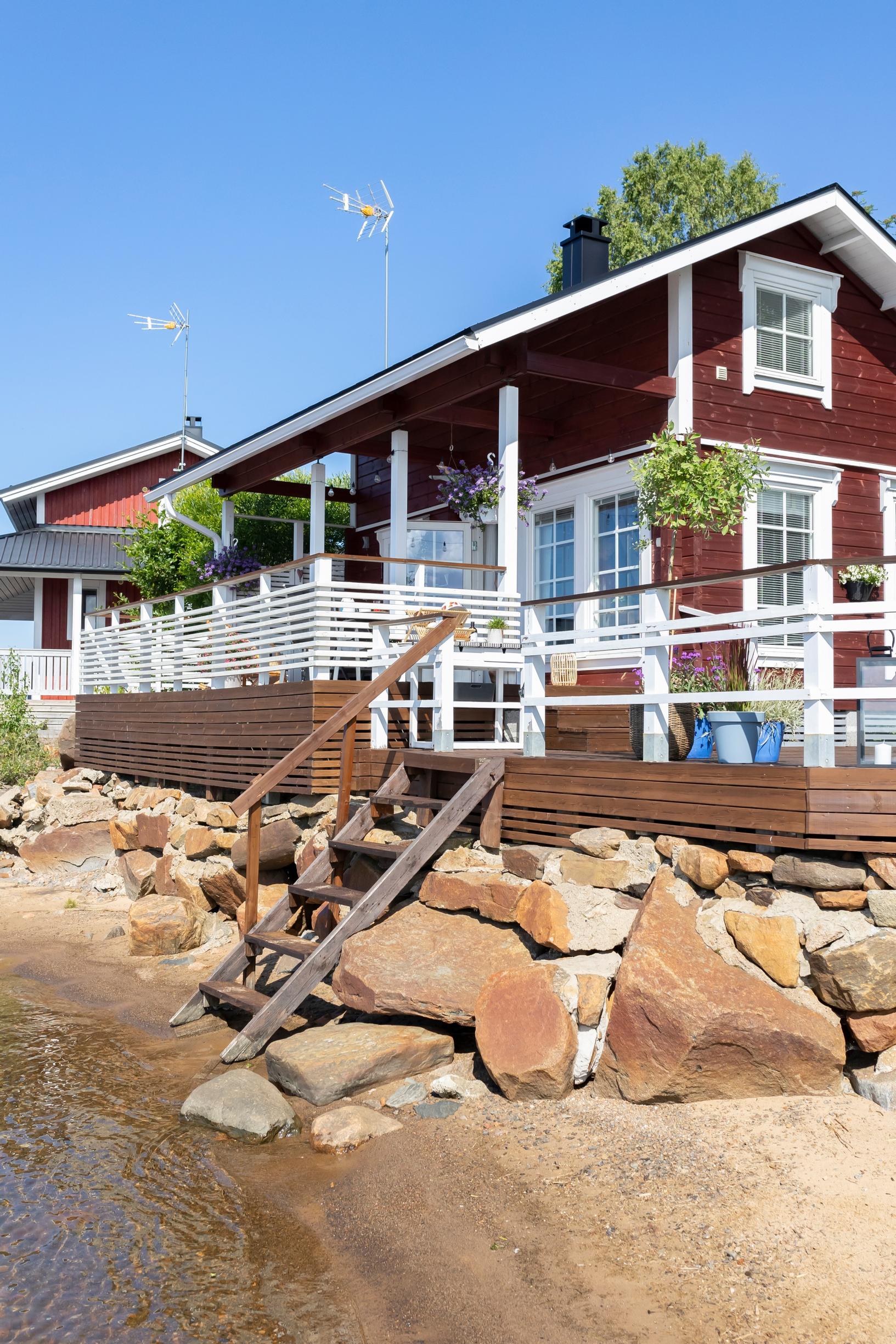
“Let’s head to the cabin!” That phrase is one Jarmo has known since his childhood in the 1960s. Jarmo’s father was a fisherman, and Jarmo’s brother Mauno would also go fishing with him. Meanwhile, their mother would come to take fish off the nets when the men returned.
Us: Seija Karhula, 58, and Jarmo Karhula, 61. Seija works as a Mela agent, and Jarmo is a dairy and crop production specialist. Their adult sons Ville and Riku also join them for sauna and overnight stays at the cottage.
Cottage: A 28-square-meter (about 301-square-foot) laminated log cottage completed in 2013, a sauna built in 1994, and a shed that functions as storage and an outhouse.
Location: On the shore of the Gulf of Bothnia in the village of Karhi, Kokkola.
Then Jarmo’s mother decided they needed a spot by the shore to make coffee. Being a determined woman, she got lumber delivered so they could build a small cabin. Jarmo’s parents put up the fishing cabin themselves in 1966 in Karhi’s communal partnership area, where many fishing cabins stand close together. No one owns the lot outright; everyone pays rent on it.
The cabin served as a break room for the fisherman’s family and a place to store and repair nets. At that time, coffee was still brewed with seawater, and whitefish from the sea was roasted on the coals in the cabin’s open fireplace.
“We got this place when we moved to my childhood home here in Karhi in 2000. The cottage is tied to my family’s property, and no new lots are granted. Fortunately, we had already been able to use my parents’ summer place as our own before moving,” Jarmo says.
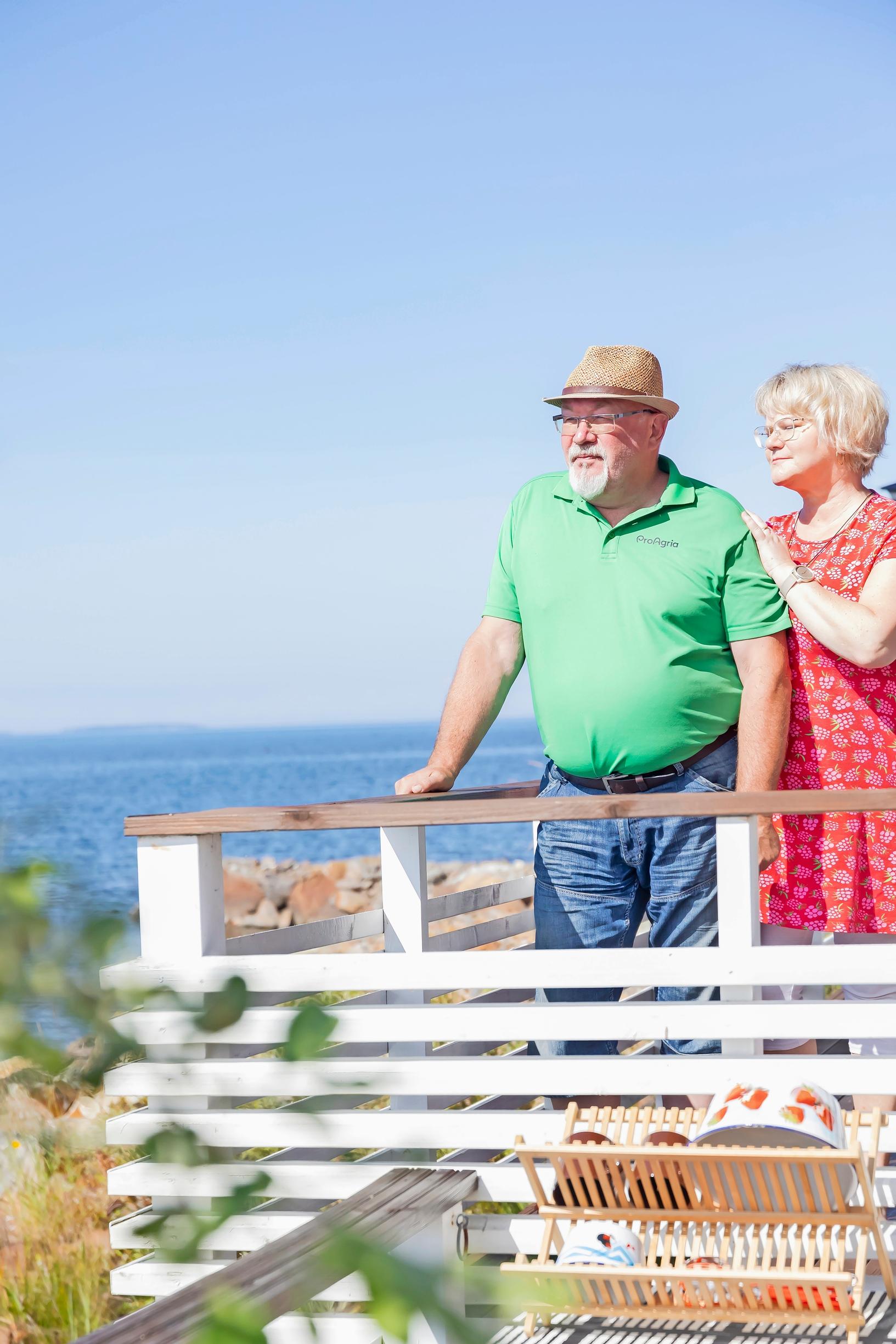
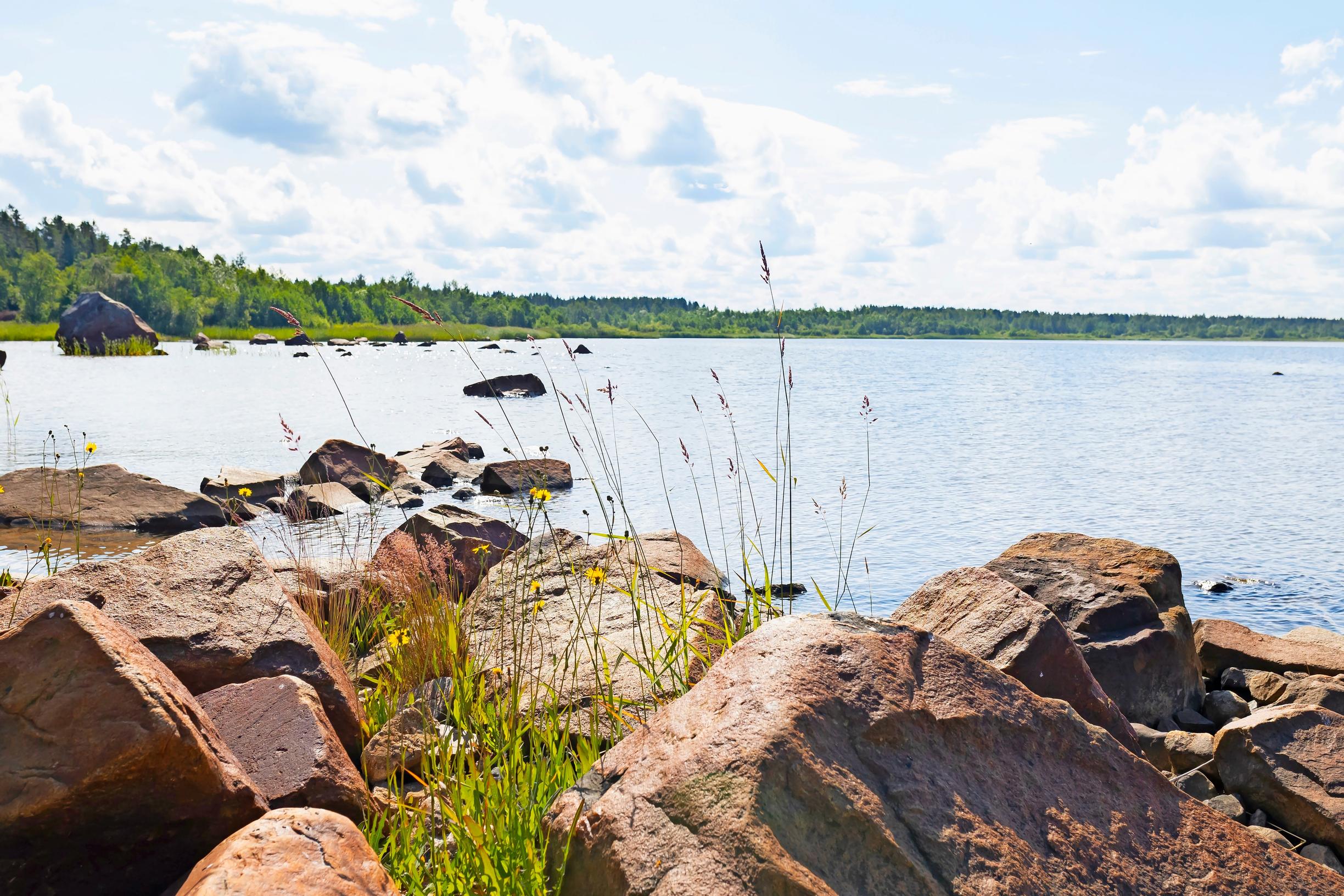
Initially, Seija and Jarmo intended to renovate the old cottage—Jarmo had already done some small fixes. But those plans changed when a fire caused by an incorrect electrical connection nearly destroyed one corner of their cottage.
They demolished the structure entirely. During demolition, they found moisture damage in the cottage that might have stayed hidden without the fire.
“We always suspected moisture damage, because there was a certain smell in that old cabin. Over the decades, the sea and storms had brought plenty of dampness inside,” Jarmo says.
They decided to build an entirely new cottage. Luckily, the current shoreline zoning allowed them to rebuild on the original site.
“This laminated log cottage we built will stand up to winds and storms for a long time.”
The new cottage’s large surrounding terraces give it an extra summer living room.
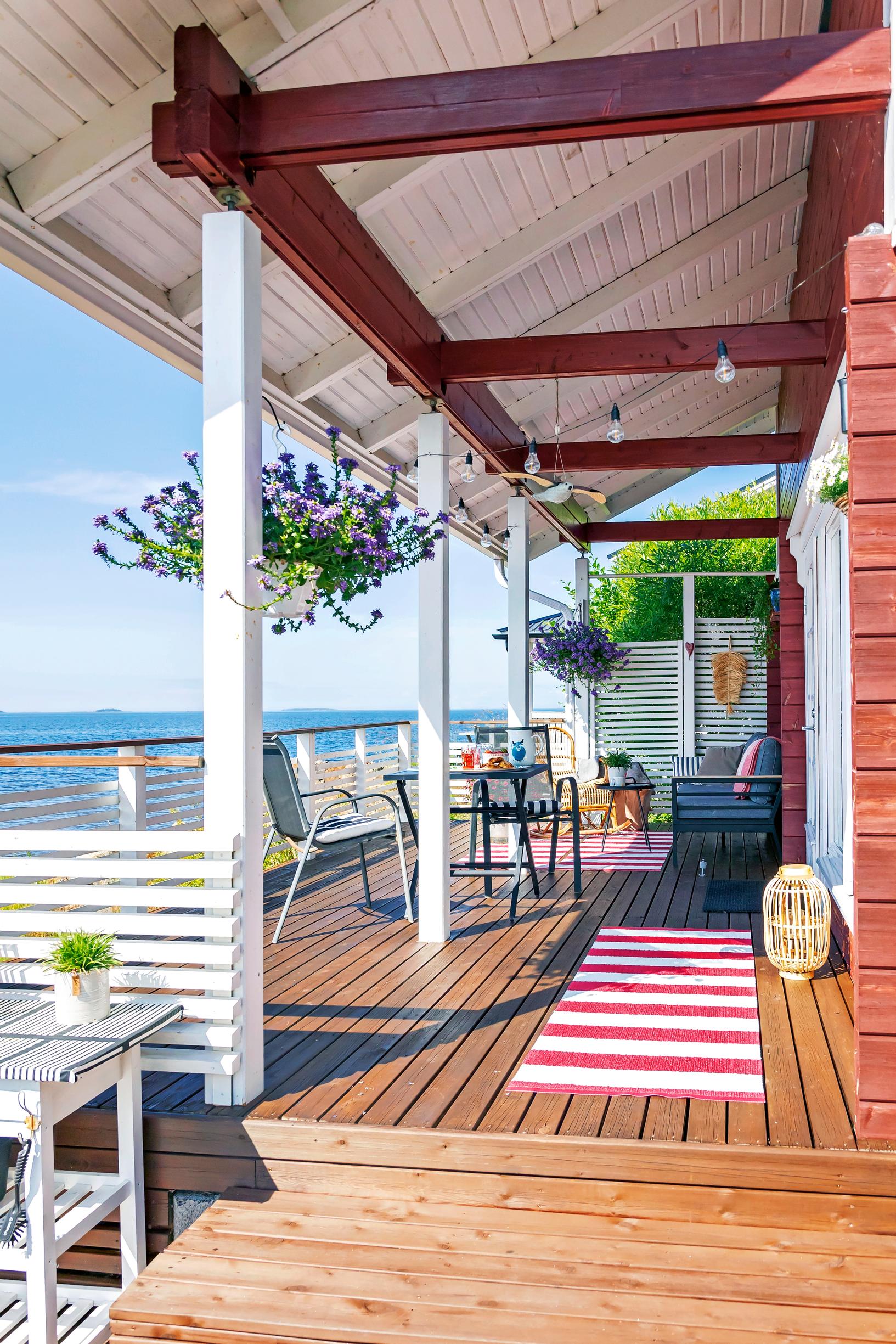
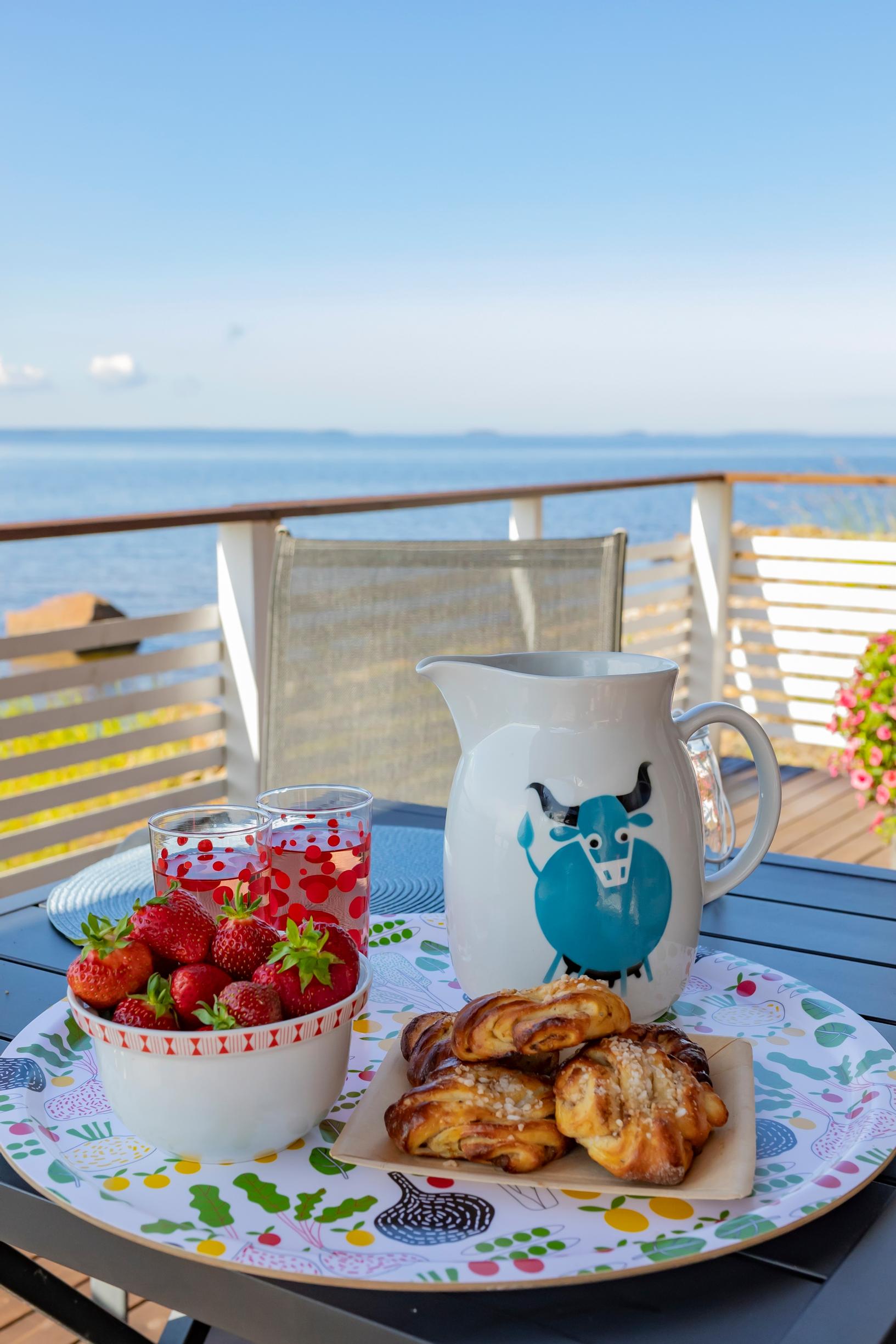
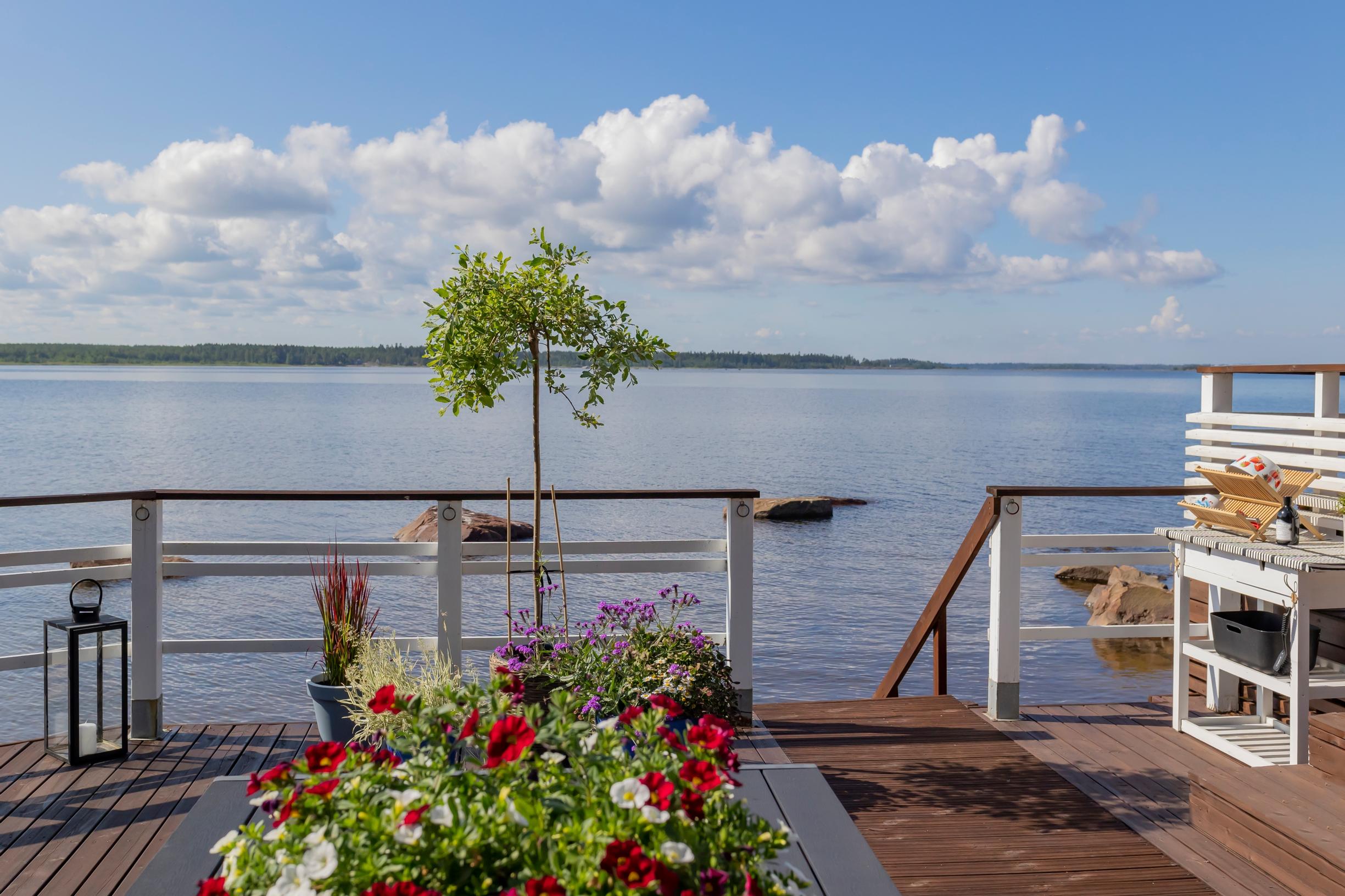
In Seija and Jarmo’s view, the best thing about the cottage is its proximity to home: it’s only a few kilometers (about 2 miles) away, and they could walk through the woods if they wanted. Because of their gear, they usually drive, stopping in most evenings and on weekends to sauna and spend the night. It’s easy to pop home to feed their cats, Minni and Leevi.
Seija starts bringing in summer flowers as early as May. There are no perennial beds on the rocky property, but there’s a small lawn and plenty of summer blooms in pots. She attends to both the flowers and the grass.
“I plan all winter what I’ll plant here. The sea breeze does make it challenging for the flowers. But petunias, trailing lobelia, and even an olive tree seem to thrive in this seaside climate,” Seija says.
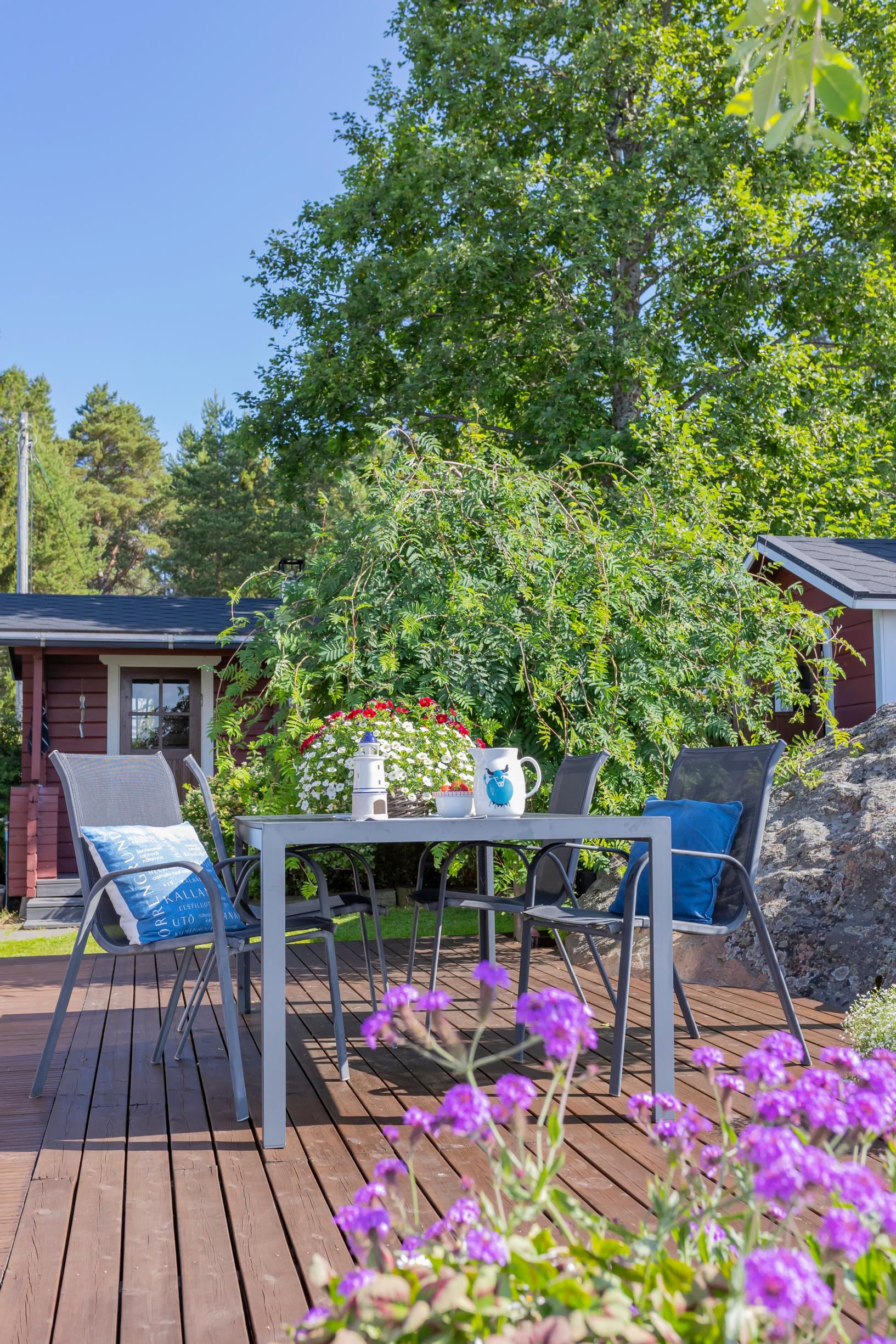
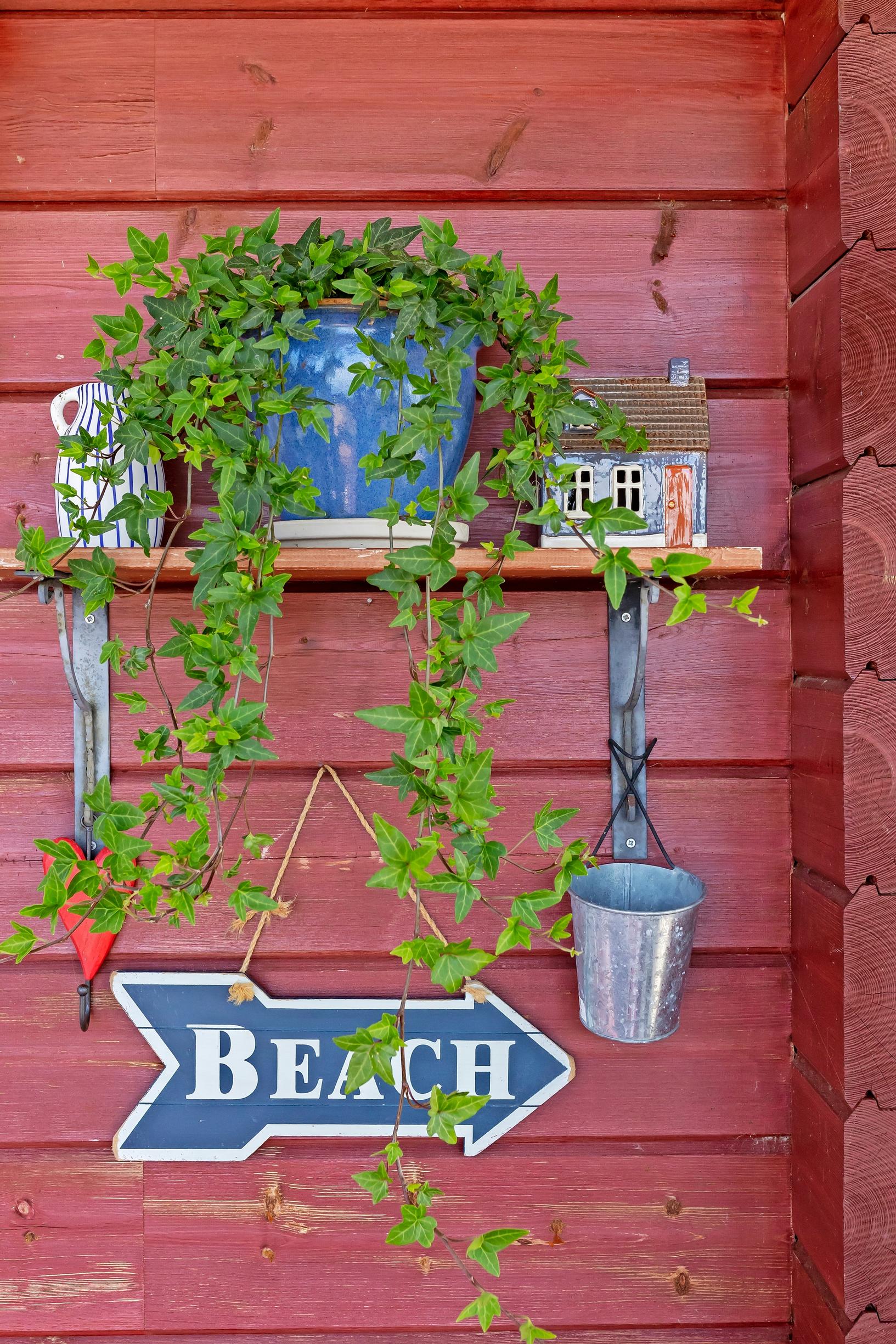
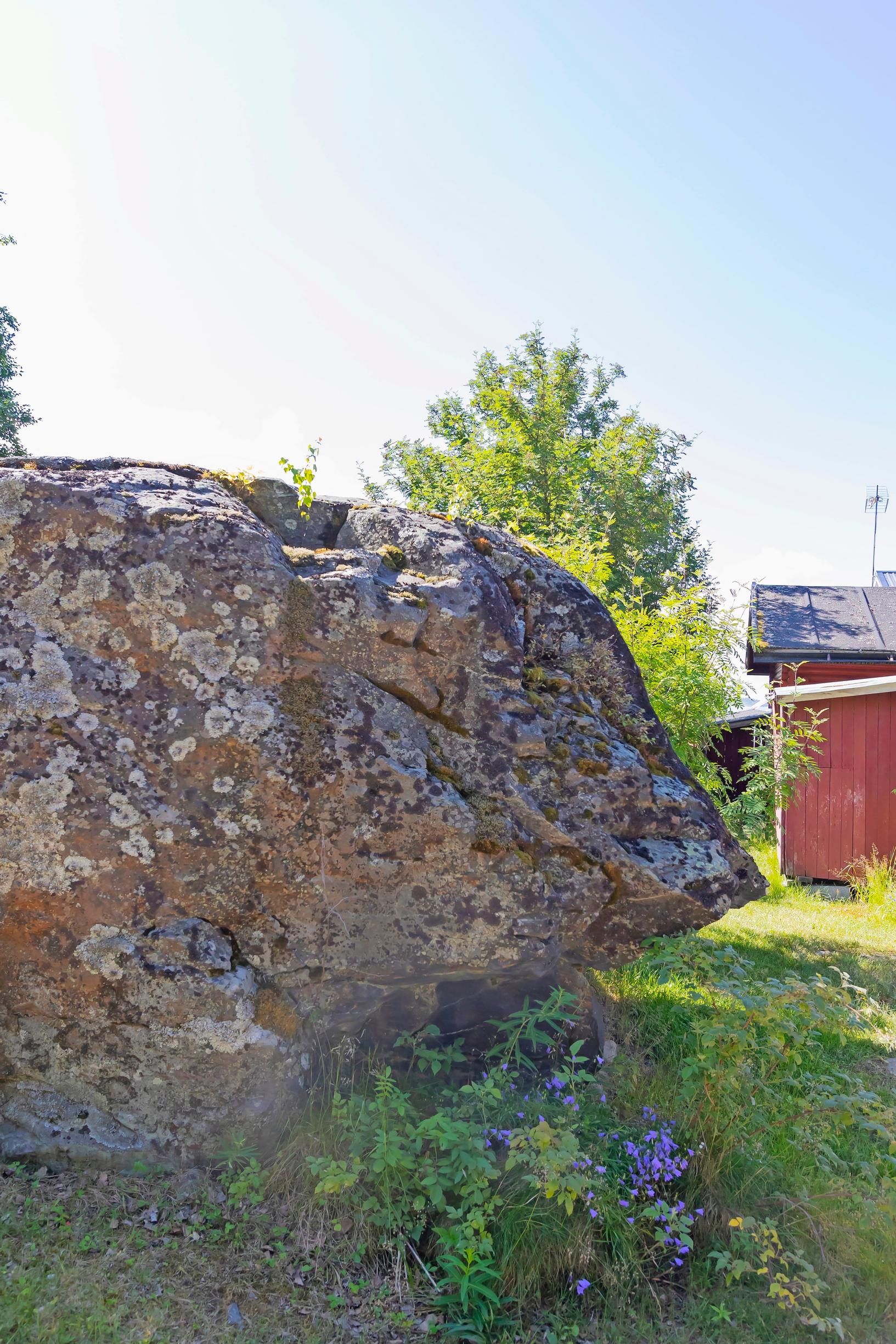
Technically, both Seija and Jarmo could work remotely here, but they choose to do other things. They spend slow summer days by the shore, and the sunset over open waters is magical.
There’s also room for guests. The couple happily welcomes friends to enjoy the sea views.
“It’s easy to prep dishes at home and just heat them here. We keep it simple: salads, grillables, or pies,” Seija mentions.
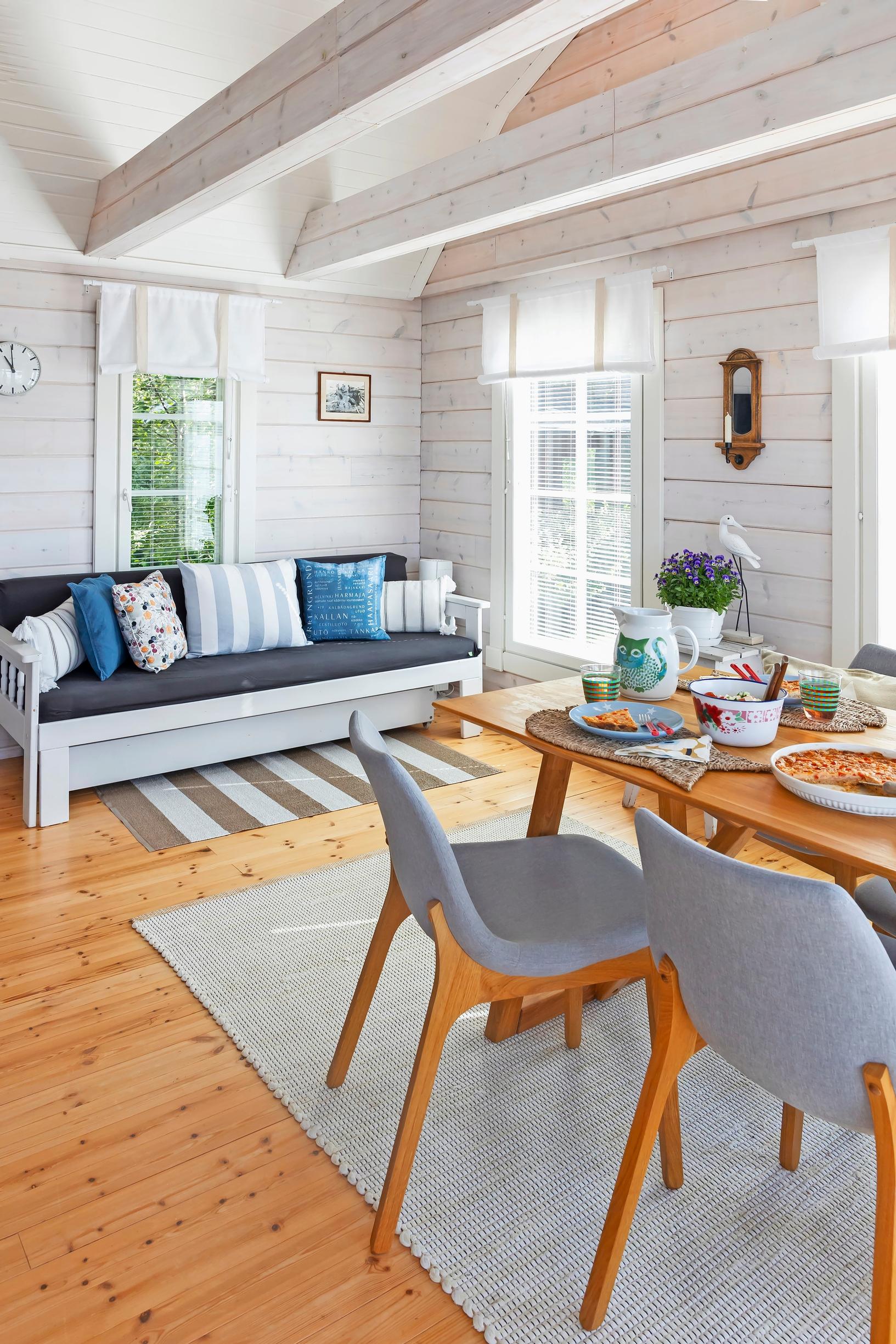
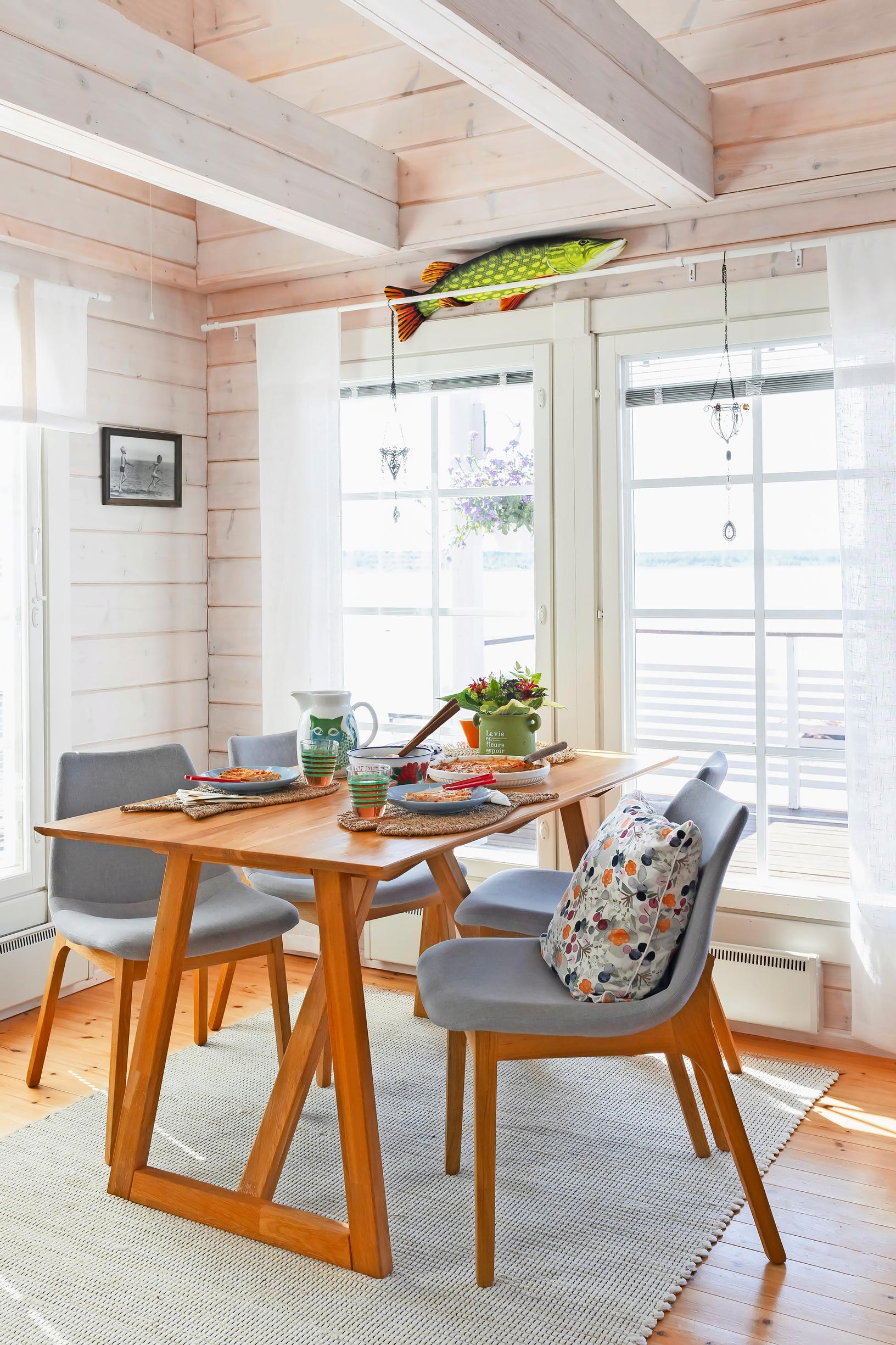
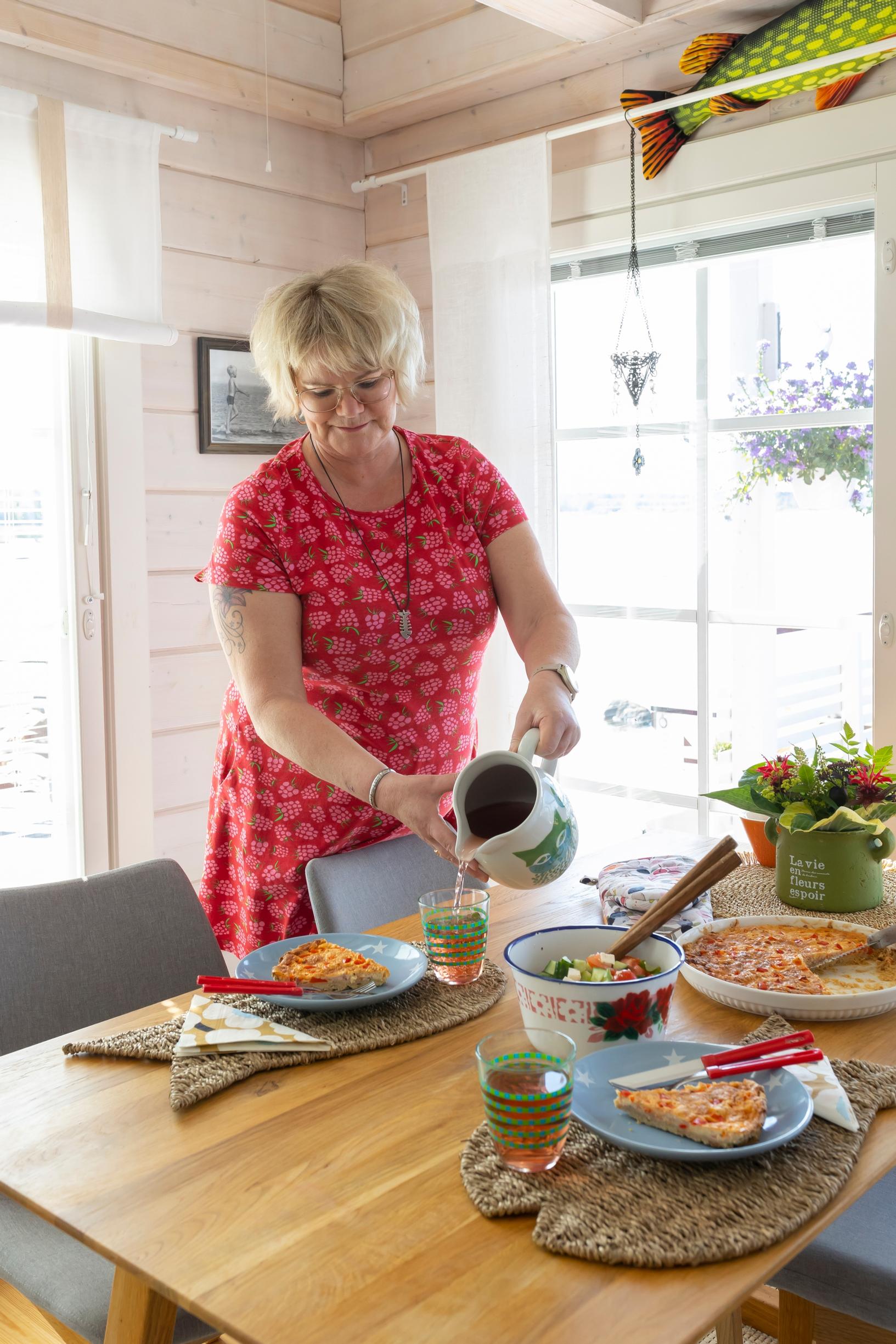
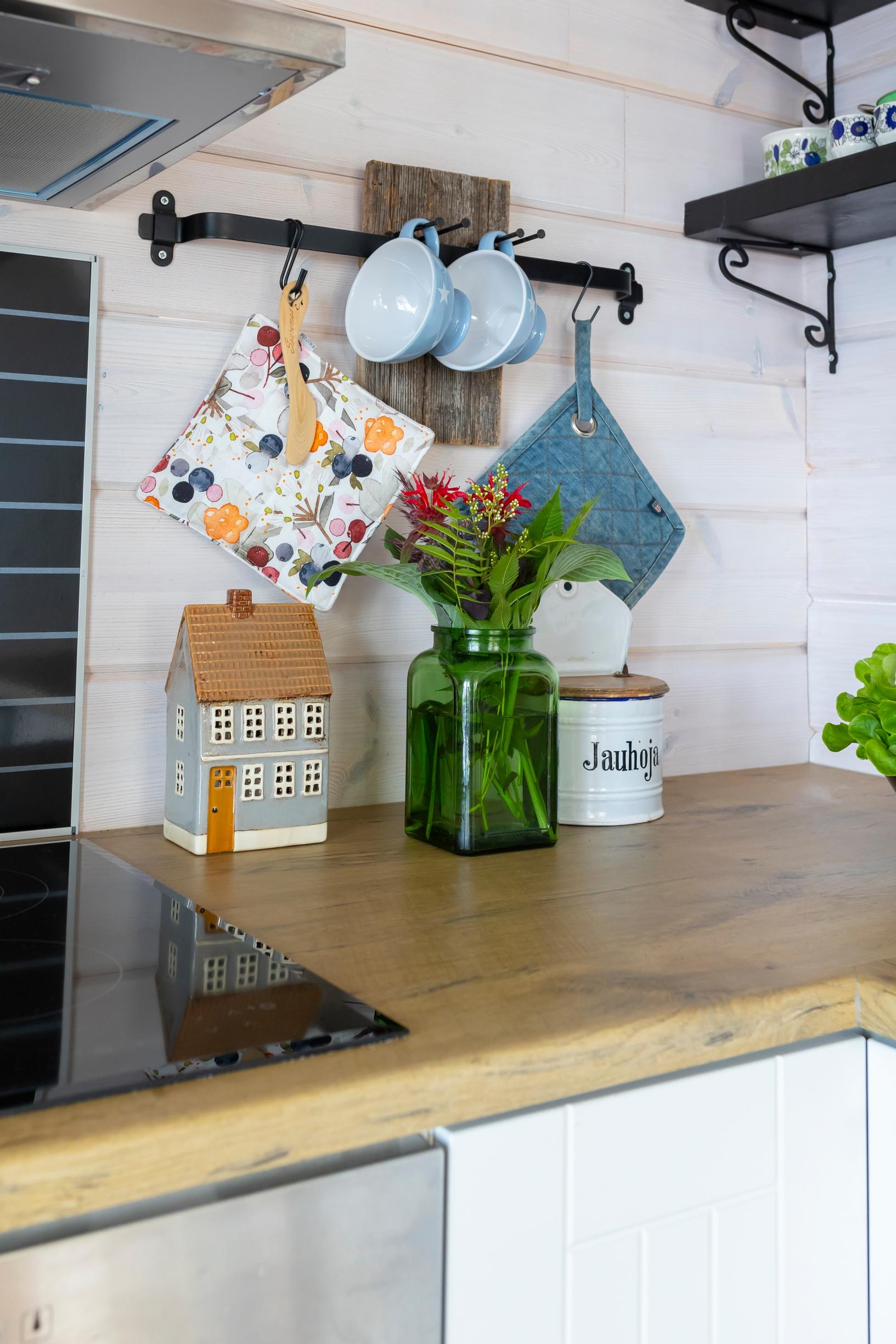
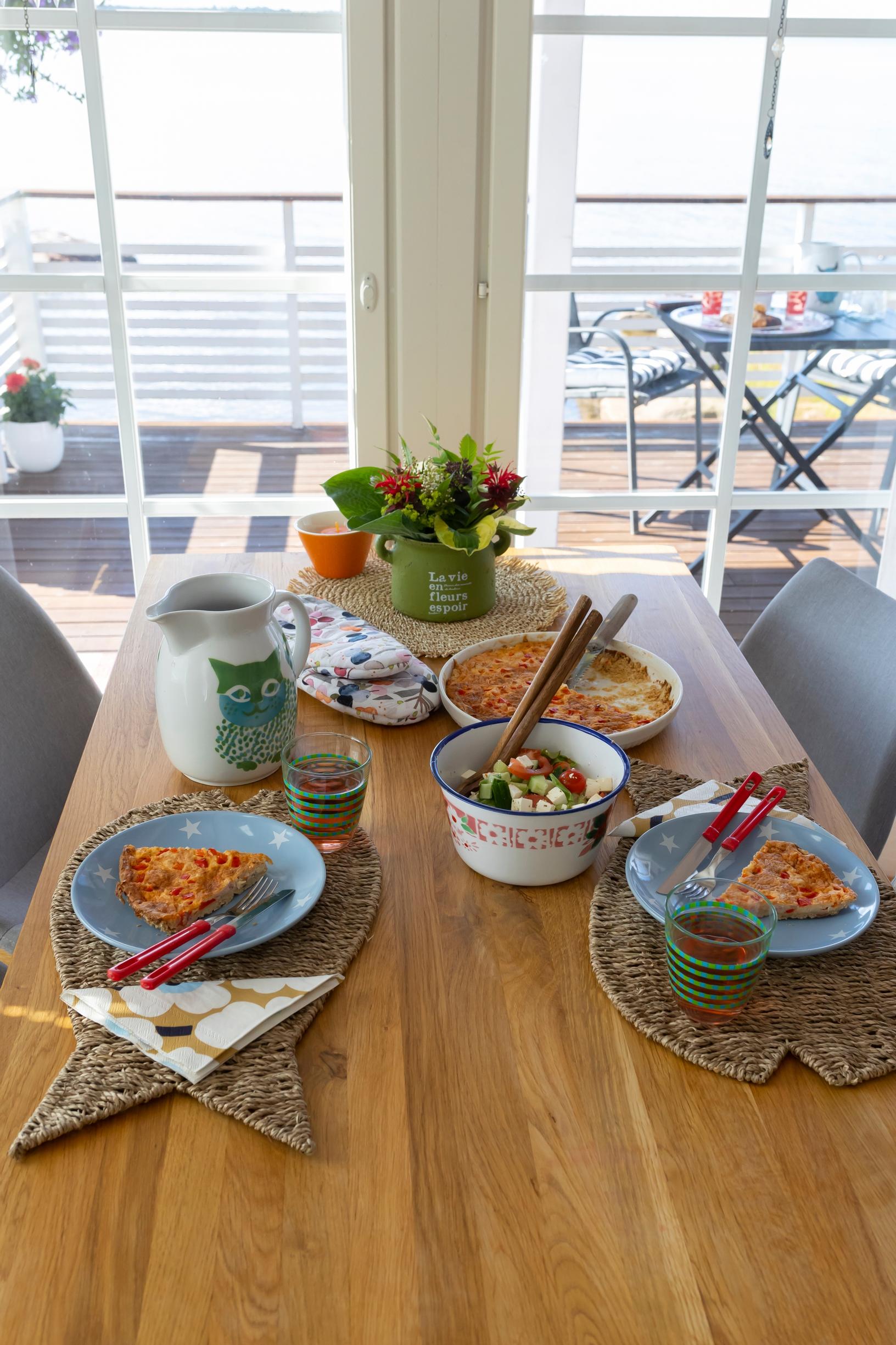
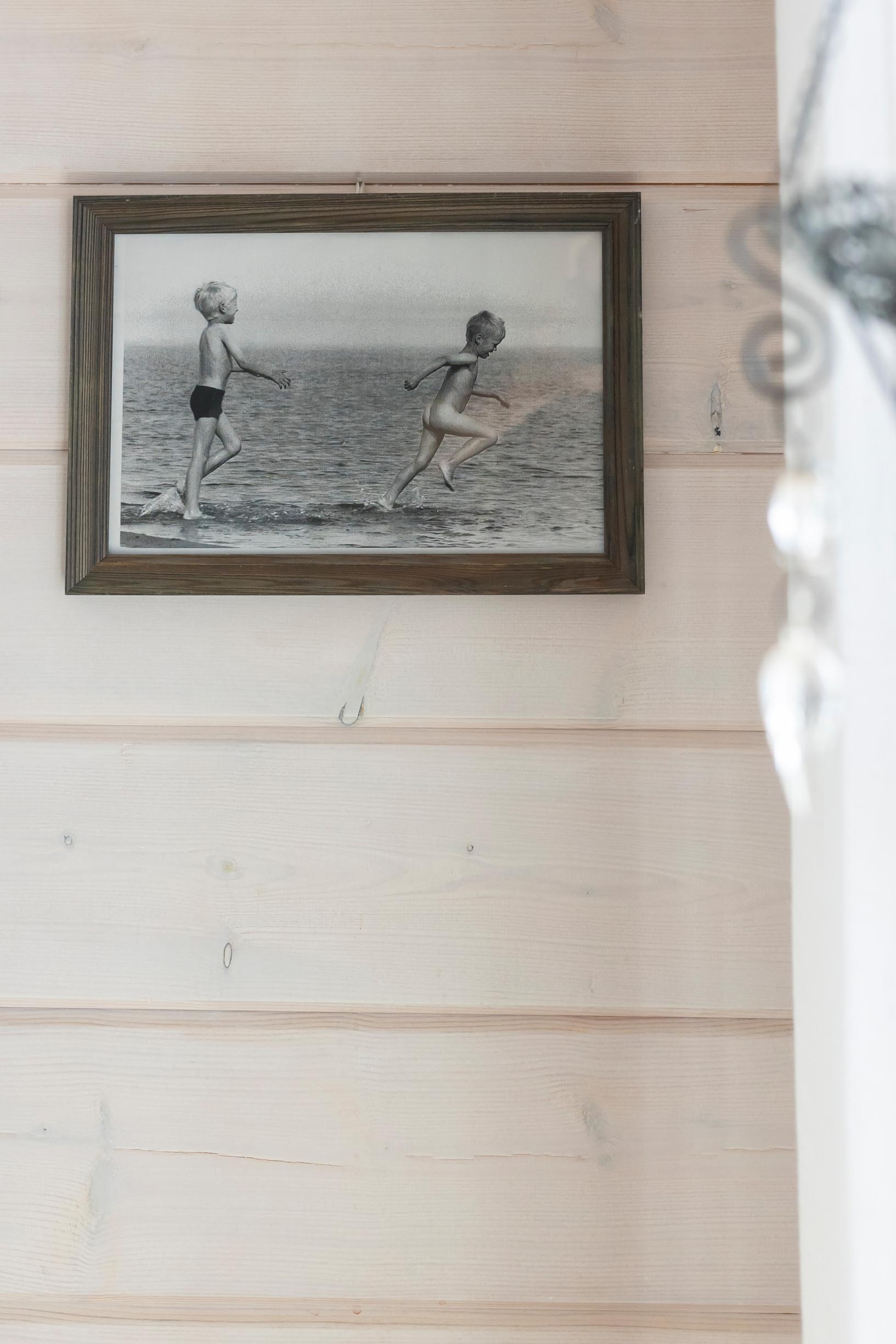
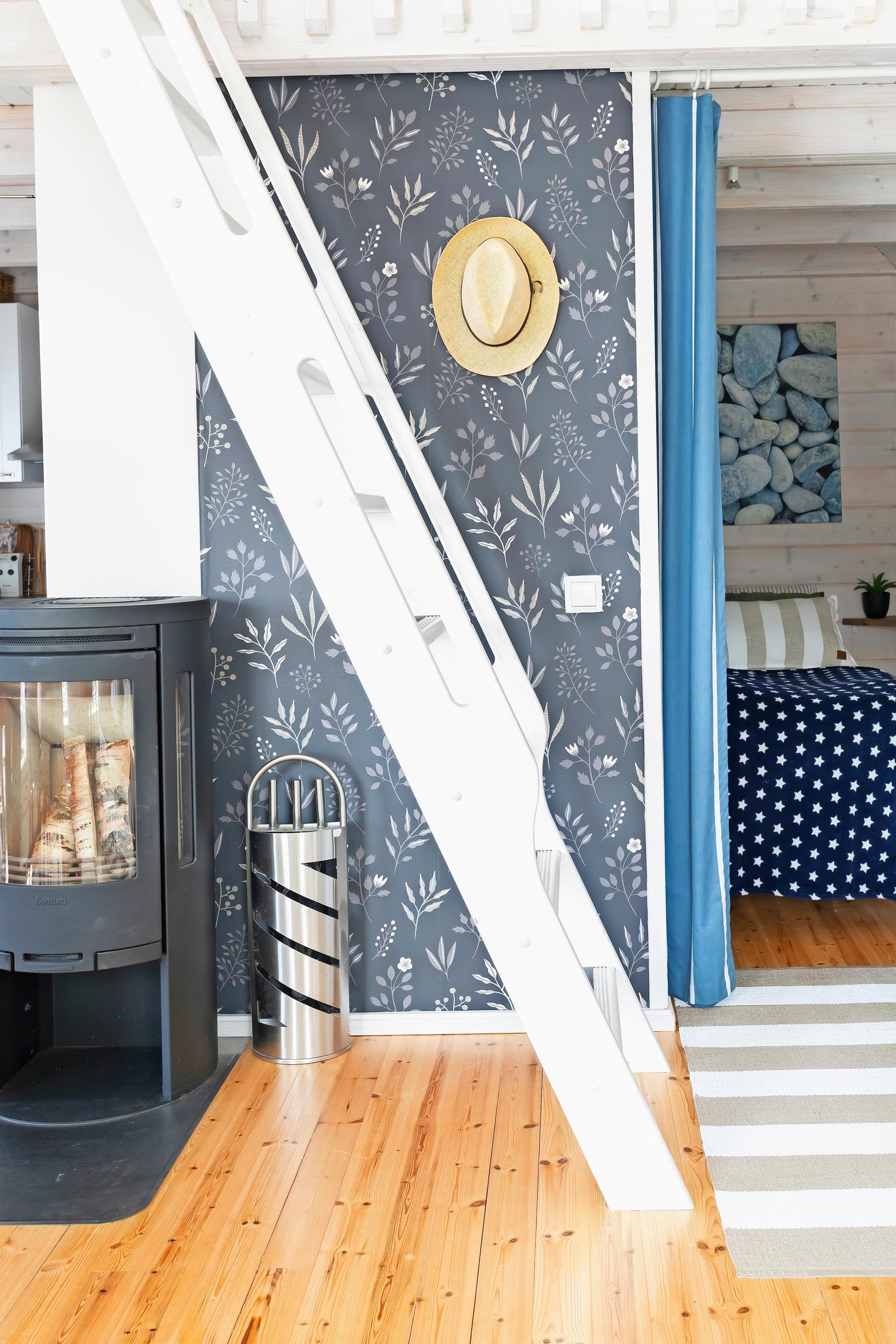
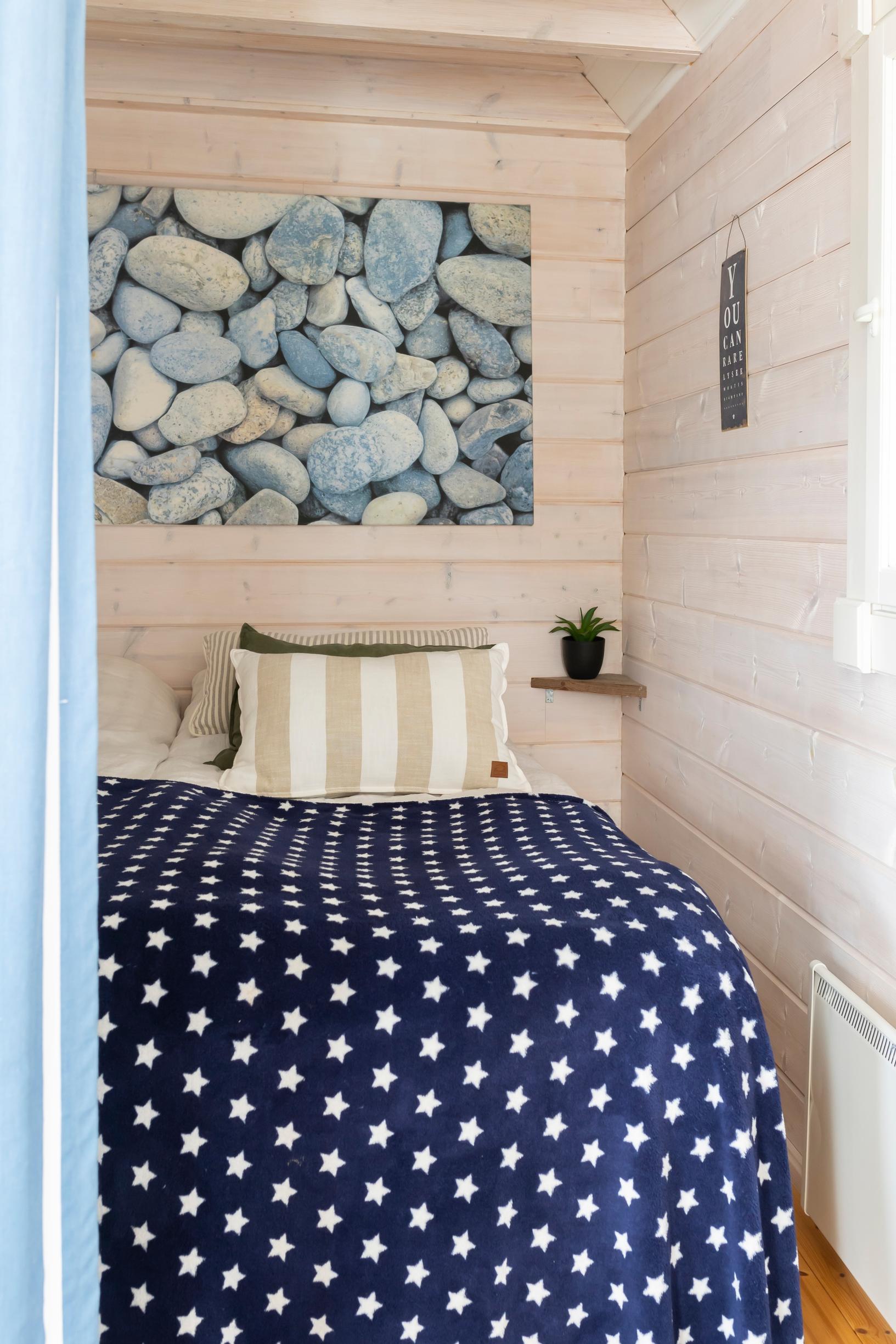
Even though the cottage is new, traces of the past remain. Two treasured photos are framed: one shows Jarmo’s childhood family pulling in nets in the early 1970s, and the other shows their sons swimming at the shore in 2000.
“Our boys used to swim here nonstop when they were little. Sometimes, when the water was chilly, Seija would ask if it was cold,” Jarmo recalls.
Seija laughs at what they answered.
“Both of them, teeth chattering, insisted it was totally warm!”
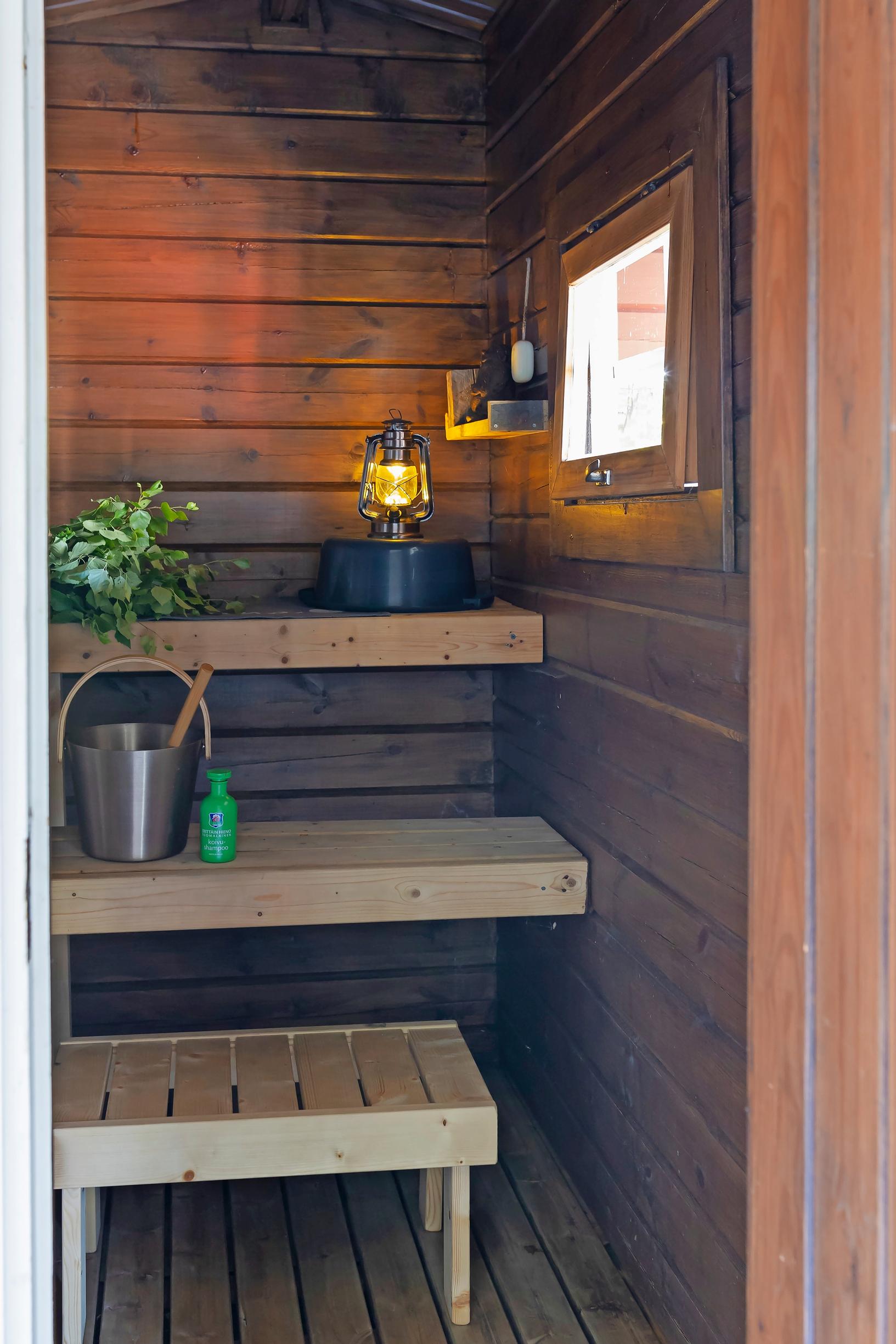
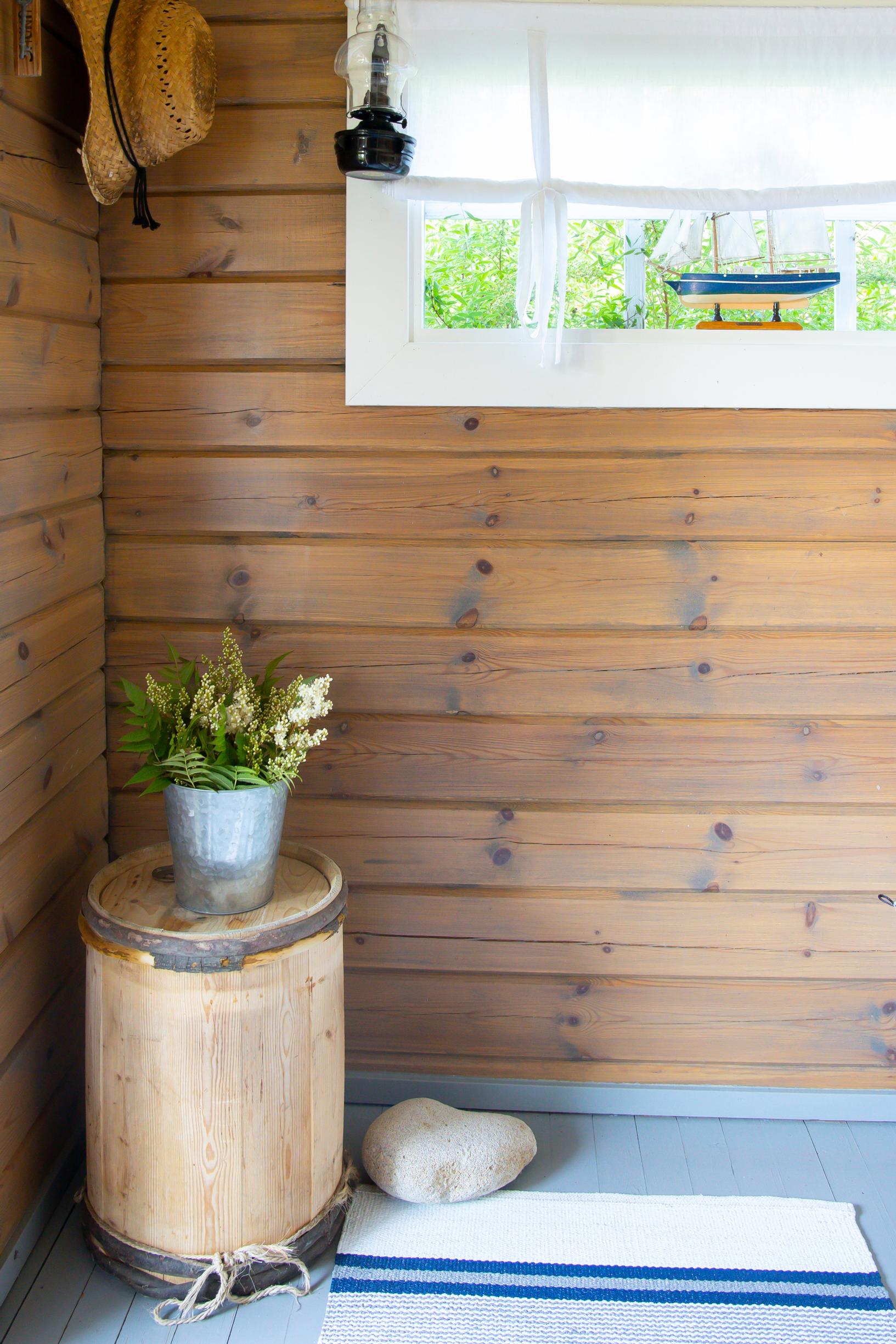
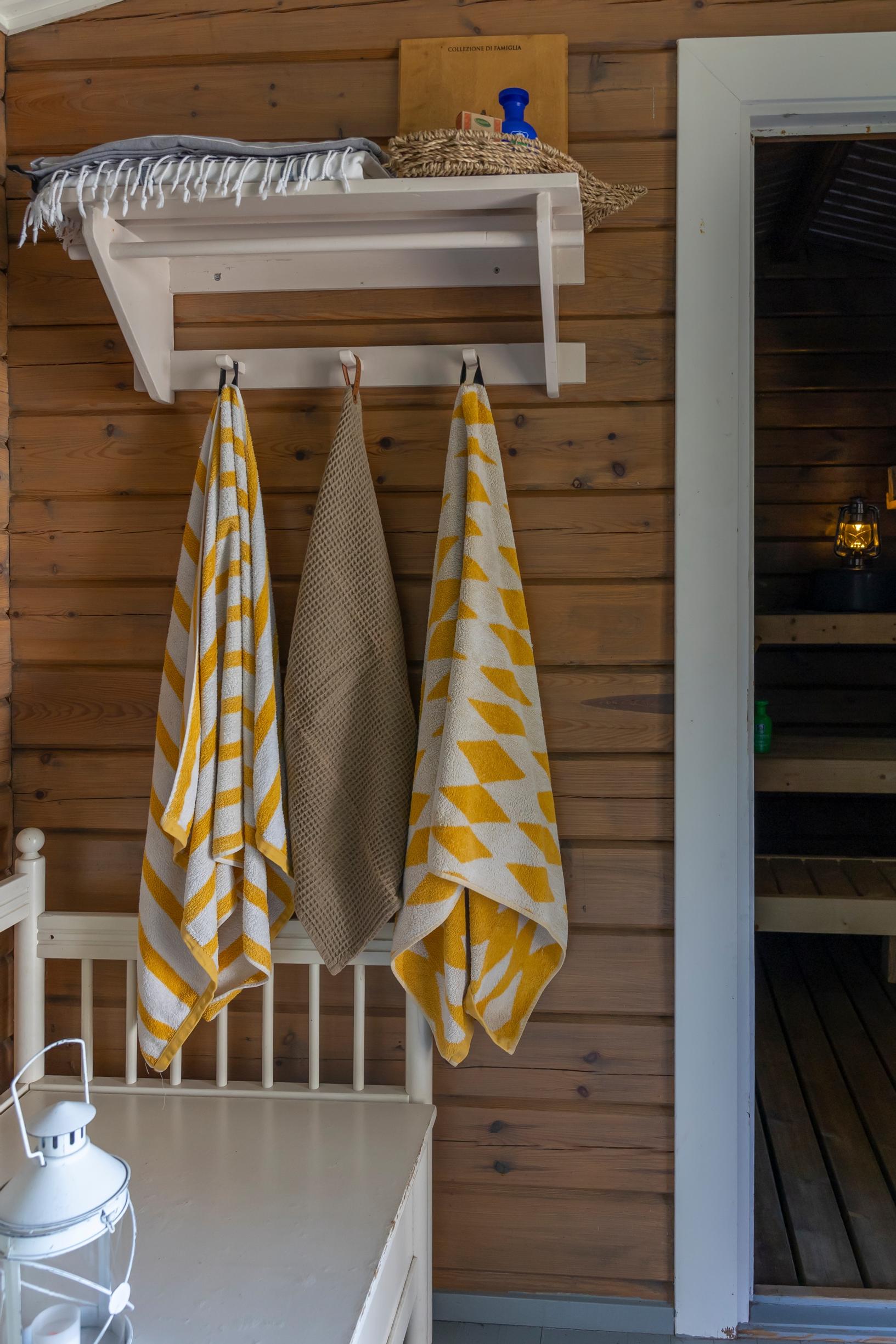
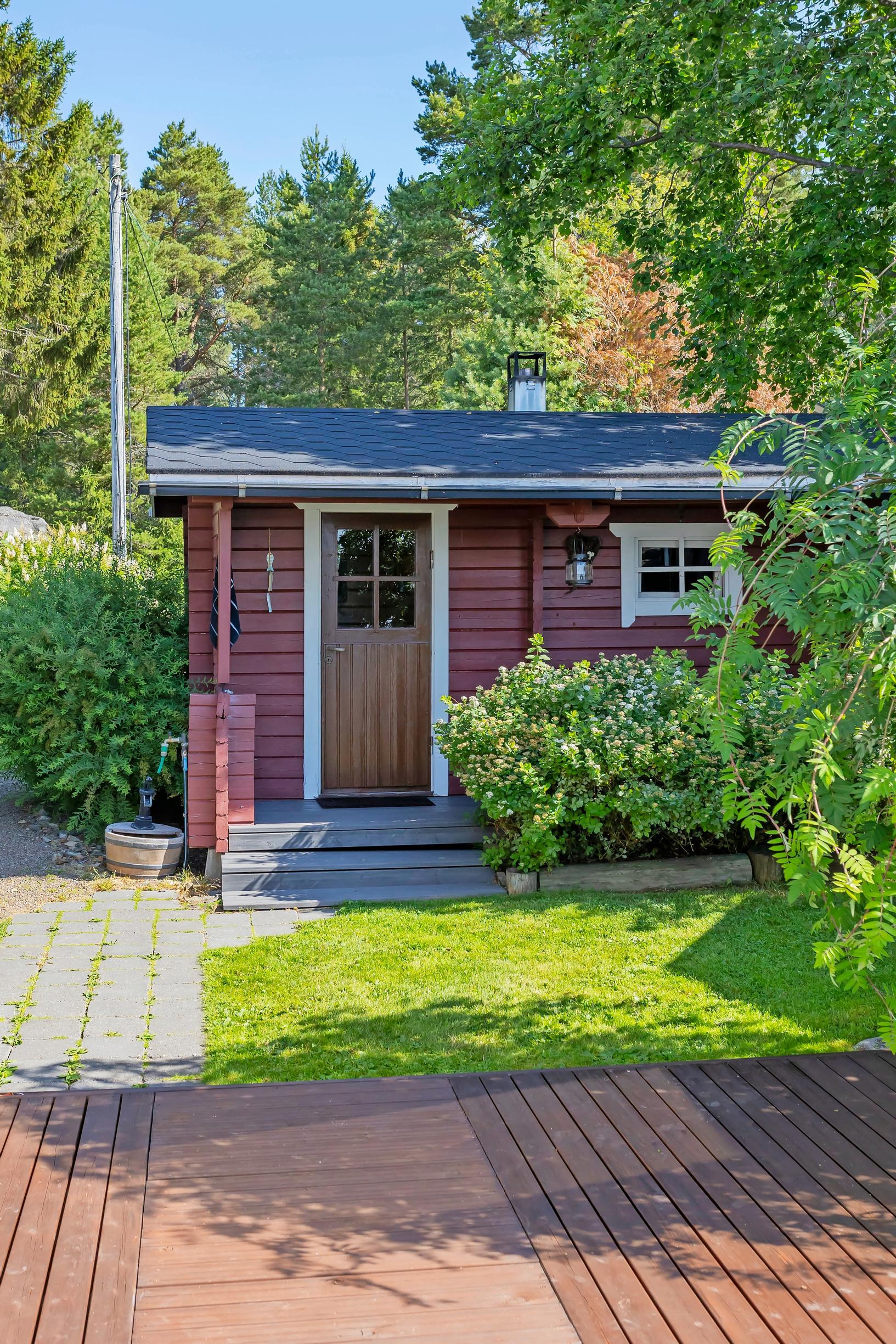
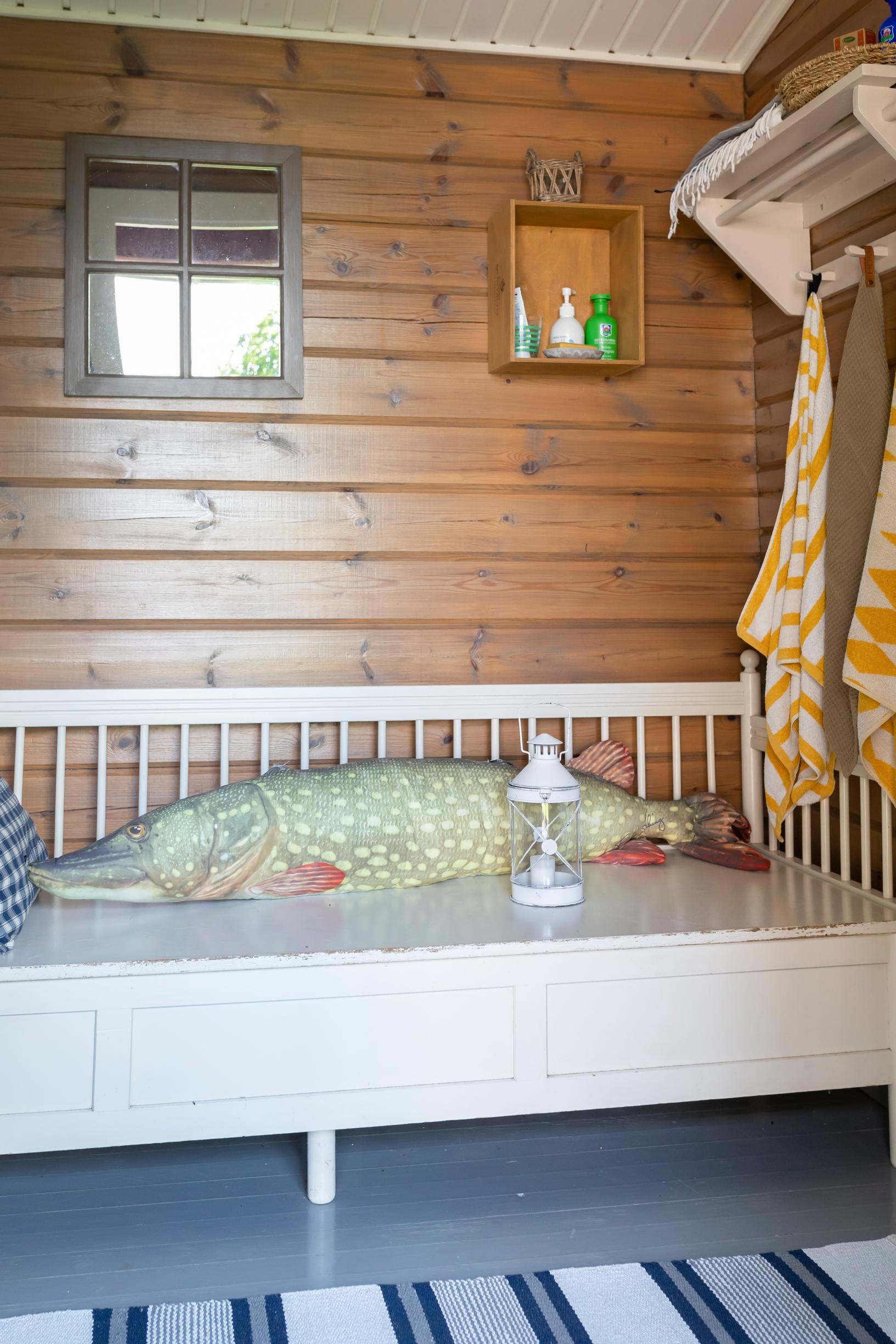
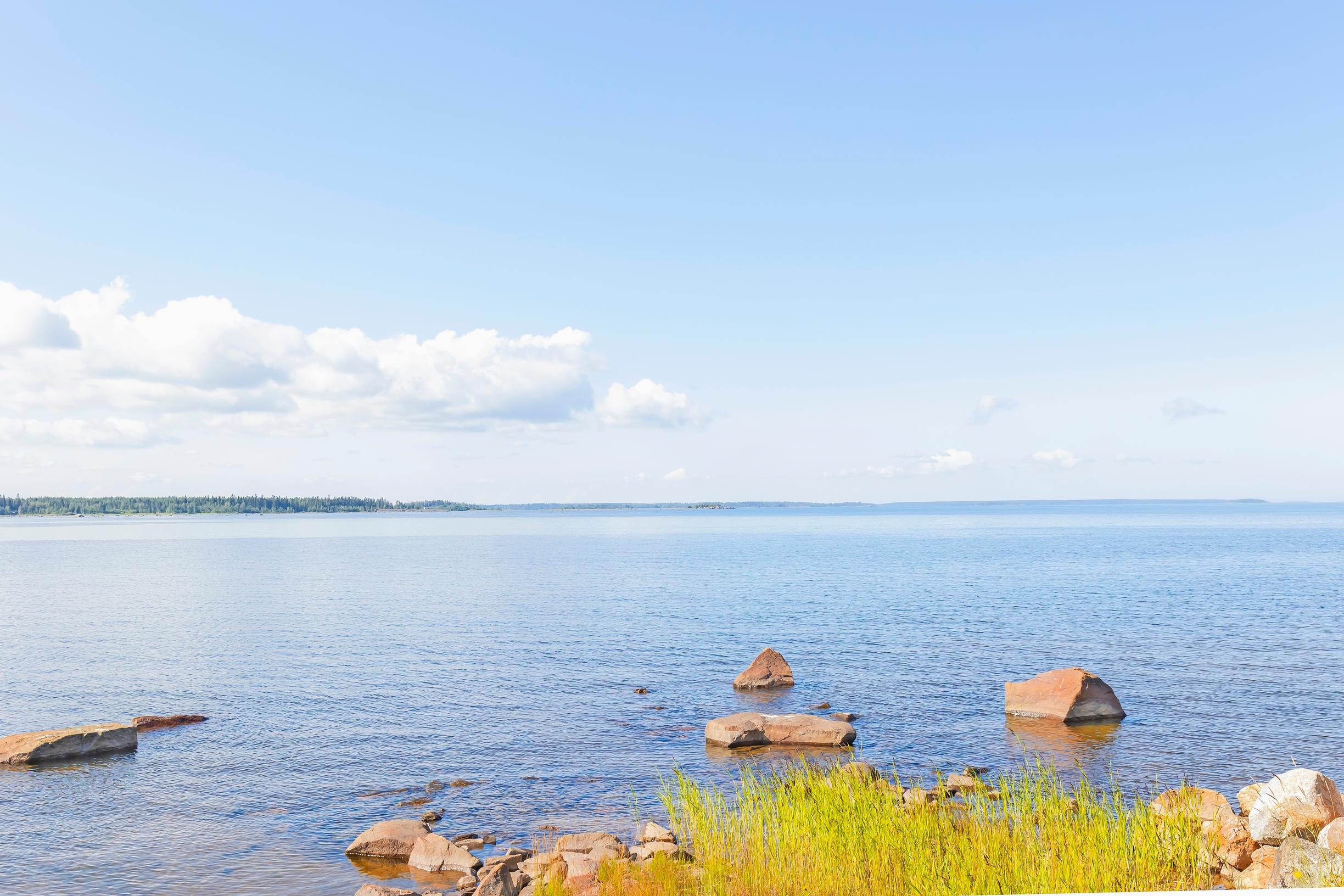
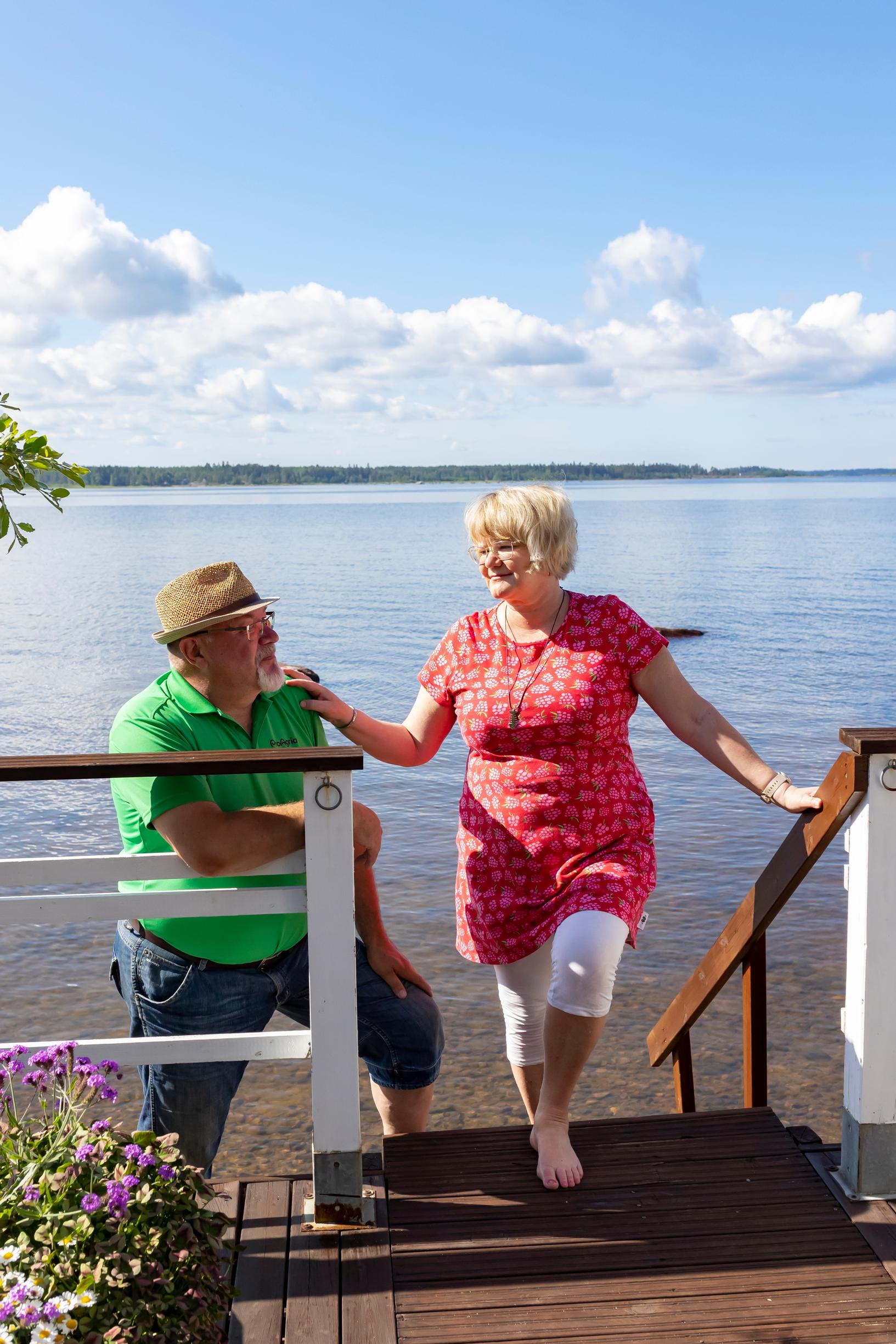
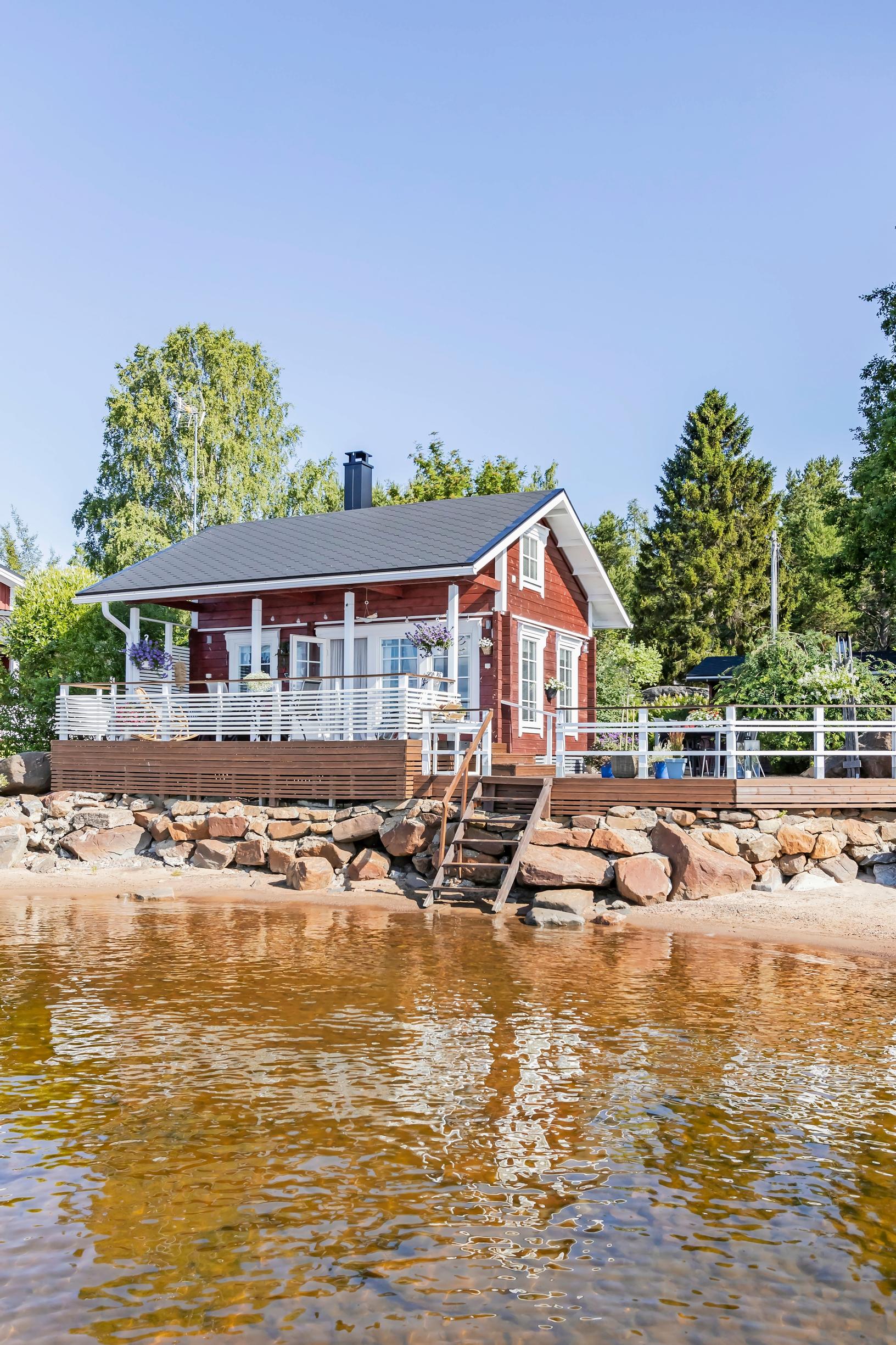
Take the Karhulas’ best ideas!
1. A flower stand made of hay poles
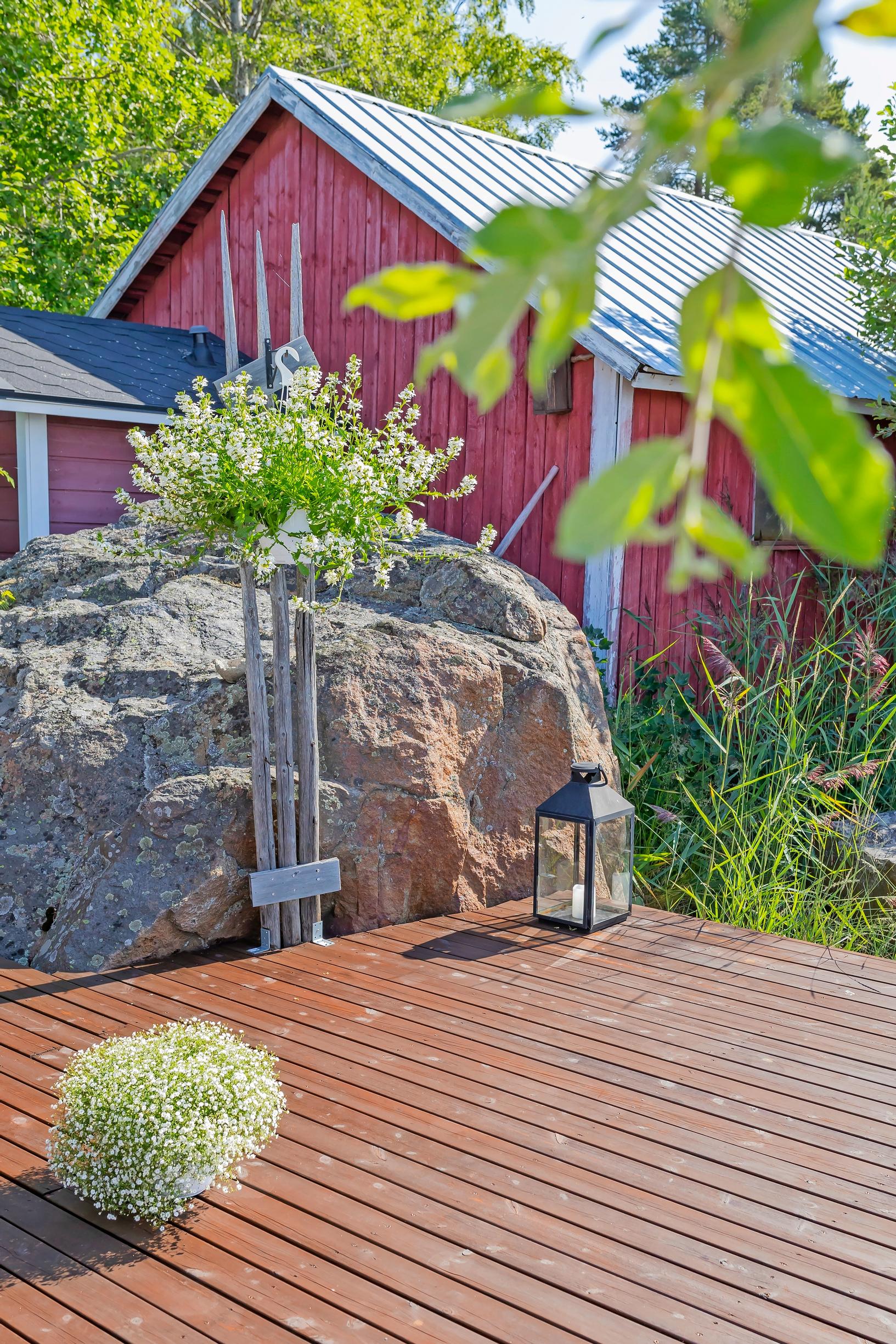
2. Furnish an outdoor summer living room
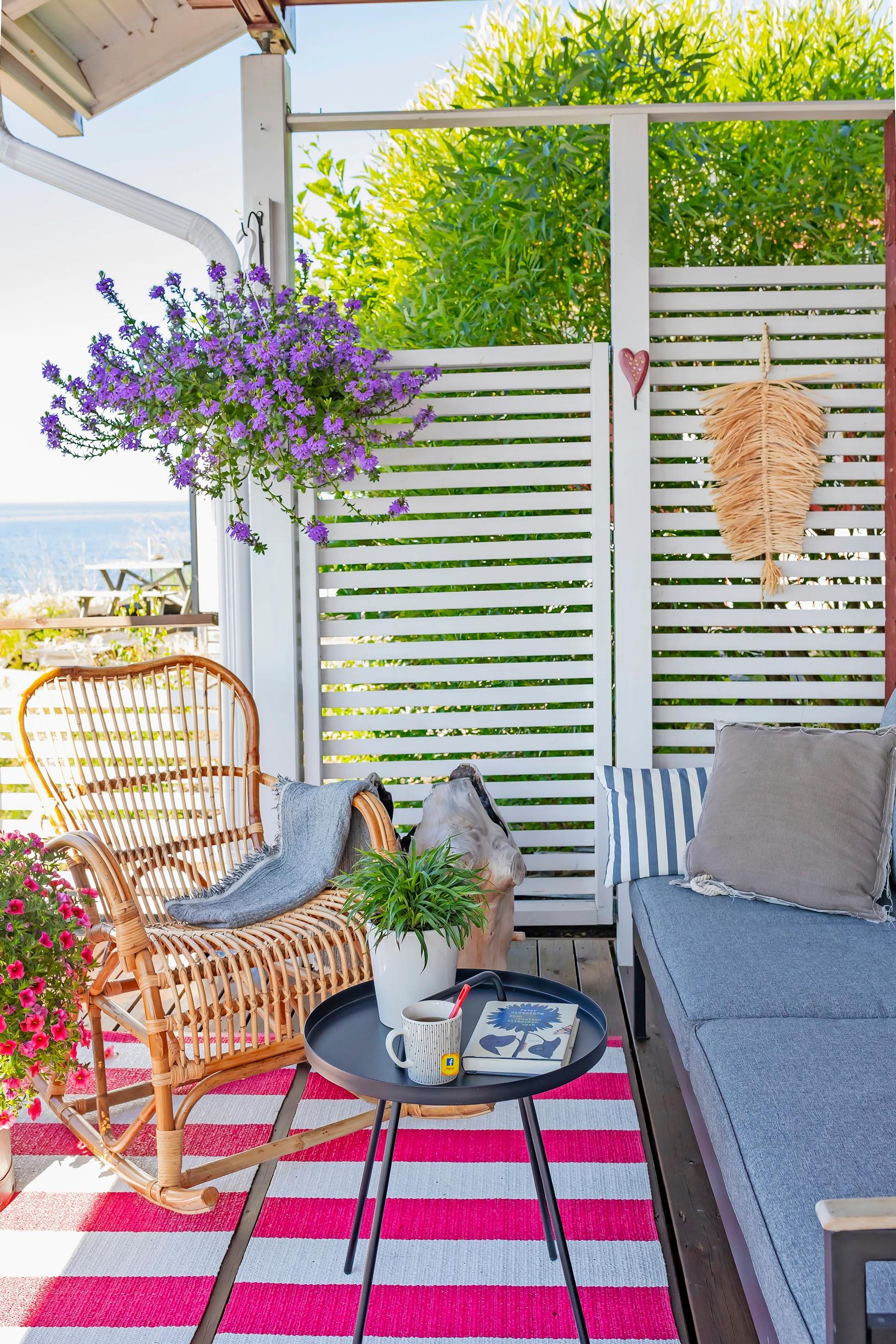
3. A unified color scheme brings calm
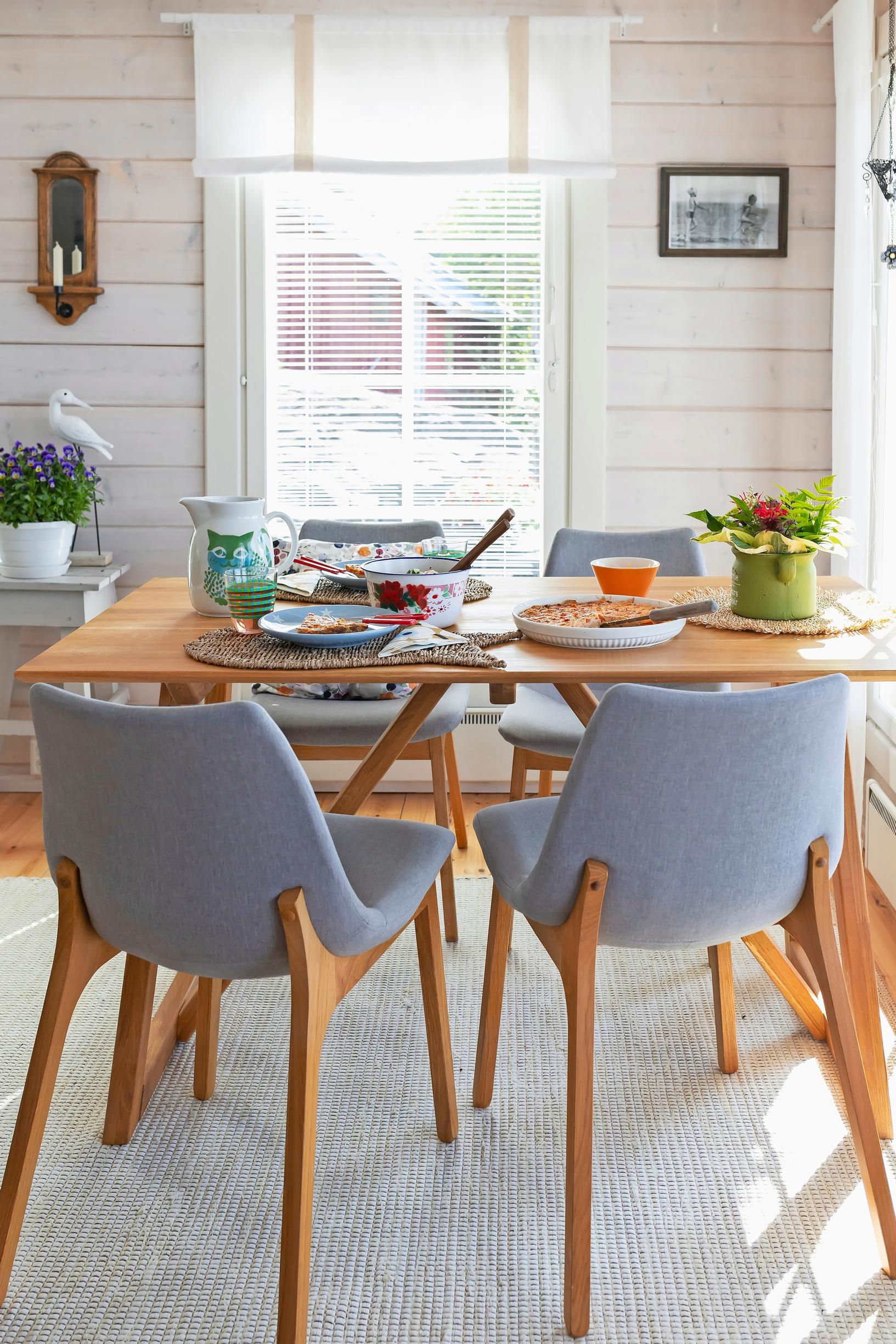
4. Make use of the full height
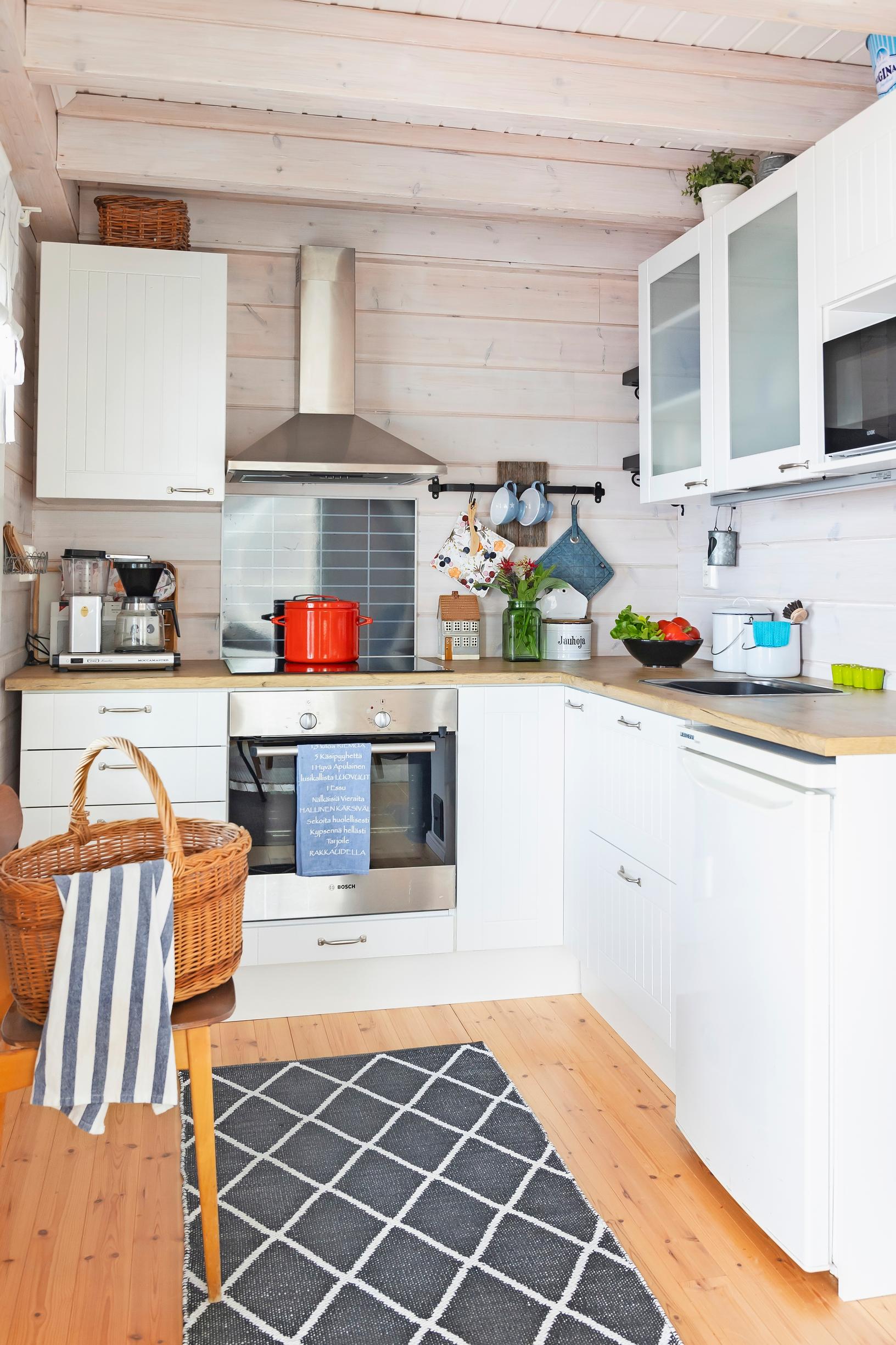
5. Pots and water crystals
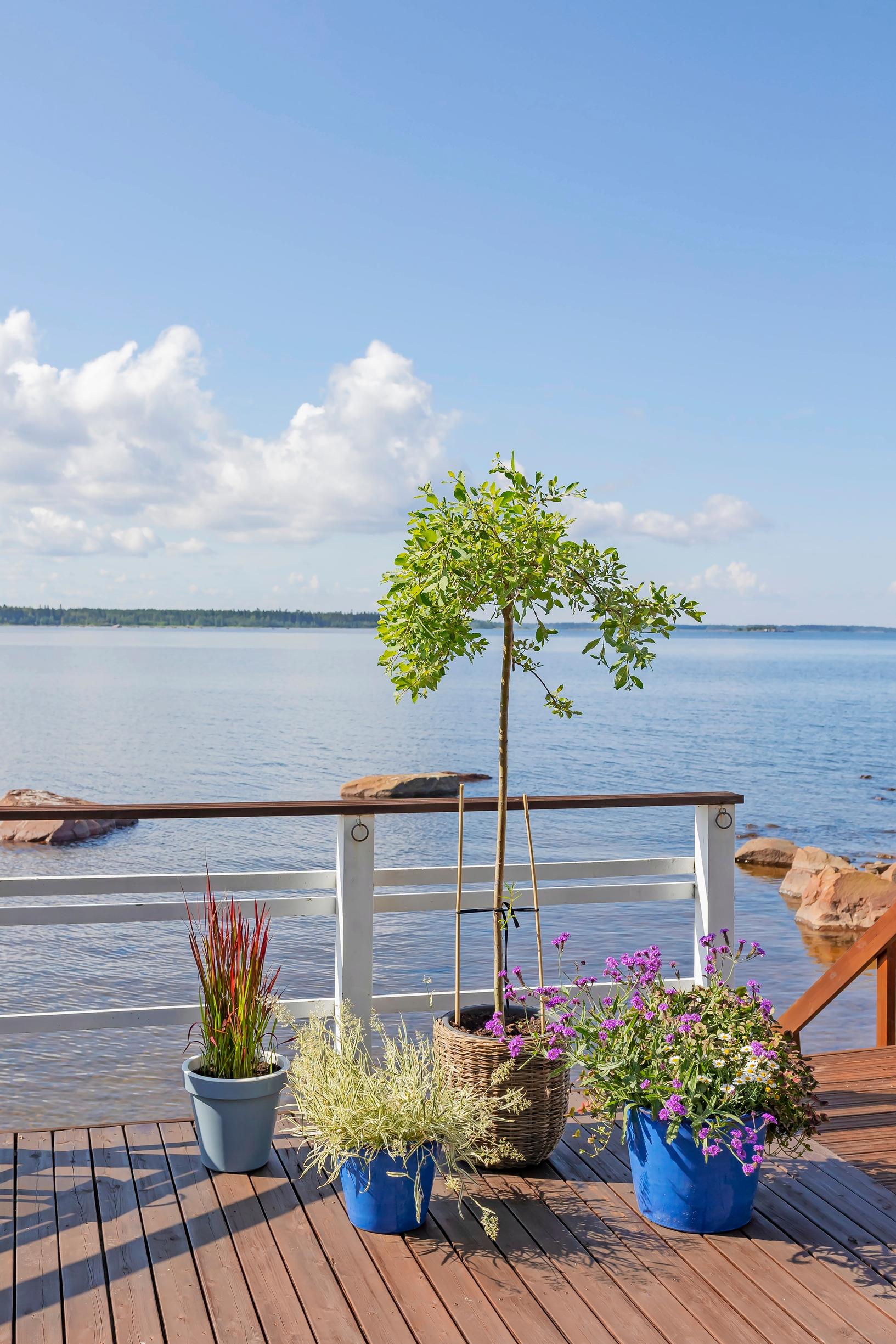
6. Durable and easy to clean
